• Don't panic! These are not true hair loss.
• Non-androgenic forms of hair loss
• The causes of male pattern baldness
• A primer on hair growth
• The four stages of hair growth
• How scalp tension causes hair loss
• How scalp inflammation causes the release of DHT
• How DHT causes follicle miniaturization
• Summary
• Guide to hair loss treatments
• Mainstream medications
• Minoxidil (Rogaine)
• Finasteride (Propecia)
• Dutasteride (Avodart)
• Ketoconazole
• Alternative medications
• Caffeine
• Trinov
• Vitamin A / Tretinoin
• Adenosine
• RU58841
• Natural supplements
• Viviscal
• Saw palmetto
• Nutrafol
• Physical treatments
• Hair transplants
• Microneedling with minoxidil
• Microneedling without minoxidil
• Platelet-rich plasma (PRP)
• Kerastem
• Low-level laser therapy (LLLT)
• Scalp tension reduction
• Botox
• Scalp massage
• Growband
Master Class: The science, causes, and treatments of hair loss
Learn the science of hair loss so you can know a good treatment when you see one.
If you're reading this, you've probably been trying to make sense of the topic of hair loss. And chances are, it's been pretty frustrating. The internet is full of pseudoscience, outdated nonsense, and grifters trying to sell you dubious cures.
Just trying to understand how hair loss works is a challenge because the sources are either oversimplified to the point where they don't tell you anything you didn't already know, or they are scientific mumbo-jumbo. We'd like to change that by offering a comprehensive guide to the science of hair loss and an overview of the treatments currently available.
We'll explain the science of hair loss in a way that will help you actually understand how it works. The better you understand how hair loss works, the more you will be able to critically evaluate any treatment out there. You'll also be able to identify BS because you'll know when a company is basing their claims on bad science.
To get things started, let's find out what hair loss is, and what it's not. You don't need to waste your energy stressing over imaginary hair loss, so let's start from there.
Table of Contents
Don't panic! These are not true hair loss.
Before you worry about how to prevent, stop, or reverse hair loss, you need to be able to separate the genuine article from impostors. There are so many myths about hair loss, what it is, and what causes it that it is easy to get confused. There are a few things that in no way portend male pattern baldness or any other type of hair loss, and we have listed them here.
Widow's peak
Perhaps your hairline looks like this.
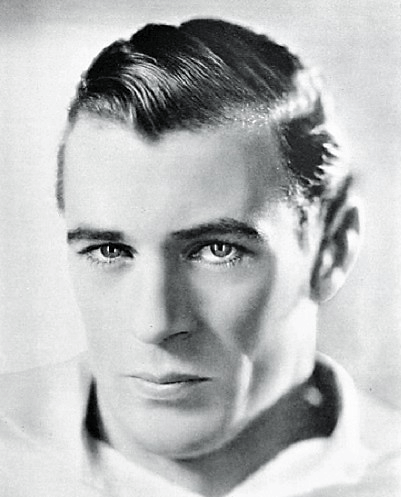
If it does, congratulations! It's a very healthy hairline. There are two basic categories of natural hairline: those that form a straight line across the forehead, and those with a v-shape. The widow's peak is the latter. It may be very distinctive, coming to a sharp point, or subtle and barely distinguishable from a straight hairline.
It is not known whether the shape of your hairline - widow's peak or straight - is the result of a single gene or a combination of multiple genes, but there has not been any correlation shown whatsoever between a widow's peak and male pattern baldness. In fact, both sexes are equally as likely to have widow's peaks.
How can I tell if it's a widow's peak or a receding hairline?
If you have a widow's peak and the hairline is very well defined, then you are probably not losing your hair. Only if the hairline is starting to get poorly defined, without a strong, sharp line, should you consider the possibility of hair loss. Alternatively, if you have always had a straight hairline, and it is starting to take on a v-shape over time, that may be a sign of a receding hairline. More on that in a bit.
Cowlicks
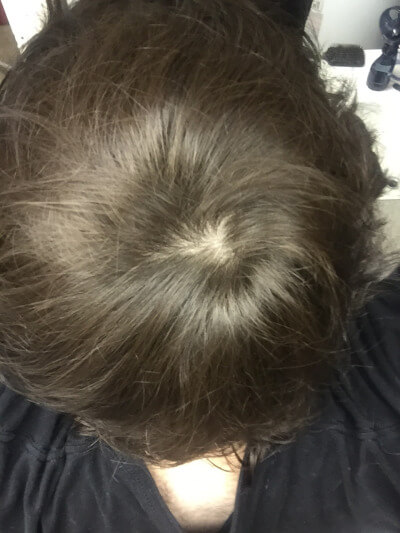
A cowlick a section of your hair that grows in a different direction or pattern than the rest of your hair. Cowlicks are most commonly found on the top of your head, also known as the crown. Cowlicks naturally create a part in the hair as the follicles grow in different directions away from that spot. Wherever a part is found, the scalp may be visible, as you can see when someone has a strong line-shaped part in their hair. That means there may be a section of scalp visible on top of your head that you confuse for a bald spot.
How can I tell if it's a cowlick or a bald spot?
One way to check if it's a cowlick or a bald spot is to part your hair in an area where you are certain you are not going bald. Look at the density of hair and the visibility of the scalp along that part. Now compare it to the cowlick. If the cowlick has the same density of hair, and the scalp is not more visible than the part, then it's probably just a cowlick and nothing more. It should go without saying that if the cowlick appears on the back of your head (as it often does), that it is not male pattern baldness, as the back of your head is immune to that kind of hair loss.
If the cowlick seems to show more scalp than the part you created, your hair may be thinning at the crown. Similarly, if a cowlick seems to grow over time, that is another sign. Additionally, if your hair is thinning in general (known as diffuse thinning) rather than in a concentrated area, that too may make a cowlick bigger without being, technically speaking, a bald spot.
Large forehead
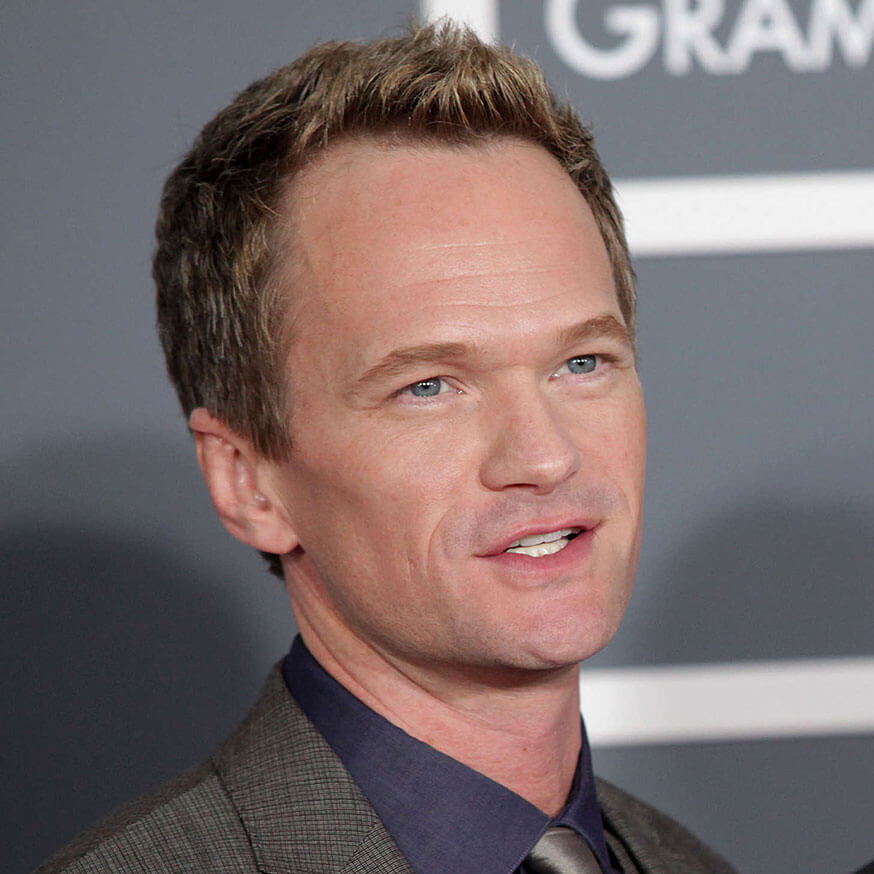
Some people simply have large foreheads. While some people's hair begins barely 2 inches above their eyebrows, others have a very high forehead. Just like everything else, it's a matter of genetics. Having a high hairline on its own is not a predictor that your hairline will recede, so don't worry. If you think your hairline is suspiciously high, take a look at pictures of yourself when younger. If it hasn't changed over time, then your hairline is not receding.
Mature hairlines
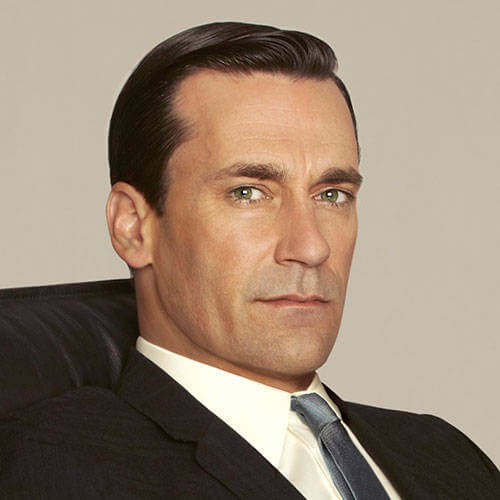
So you took a look at your old photos and discovered that your hairline is higher now than it was back then. Don't panic just yet! There is a possibility that you simply have a mature hairline. Most people aren't even aware that this phenomenon exists despite how common it is. Between the ages of 17-30, most men will experience a change in their hairline in which it recedes slightly but then stops. The hairline does not become poorly defined as in male pattern baldness, but rather just sits higher than before. A mature hairline does not portend baldness.
Beware that even some dermatologists are unaware of mature hairlines and may falsely tell you that you are going bald. They may do this to scare you into buying their hair loss treatment.
How can I tell if it's a mature hairline or hair loss?
First off, if you are between the ages of 17 and 30, in all likelihood any change in your hairline is from a mature hairline and not pattern baldness. If your hairline changes after that point, the odds of it being pattern hair loss are higher.
One way to test your hairline is to wrinkle your forehead. If the space between the highest wrinkle and your hair line is no more than an inch, then it is probably a mature hairline.
Non-androgenic forms of hair loss
Not all hair loss is caused by male pattern baldness, nor is all hair loss permanent. Before we explain the science of male pattern hair loss, it is helpful for you to know about two other forms of hair loss that are quite distinct from androgenic alopecia. Identifying these conditions will help you to avoid wasting your time and money on conventional hair loss treatments that won't do anything for these types of hair loss.
The first is a temporary form of hair loss known as "telogen effluvium". It is not uncommon but it is seldom a serious issue in and of itself. It happens when a shock to the body - such as extreme stress, sudden weight loss, or nutritional deficiency - causes a hair follicle to stop growing its current hair. The hair is then disconnected from its root and ultimately falls out.
You will learn more about this process in the next section, but for now, just know that it will take the hair 3 or so months to actually fall out after the event that causes telogen effluvium because that is the average length of time a hair remains in its follicle after it is cut off from the root. So this means, if you suddenly find you are shedding hair a lot and you cannot think of anything that caused it, think back a couple months.
Telogen effluvium is rarely a cause for worry. Your hair will grow back in a few months. However, in rare cases, the cause of the hair loss may be something more serious, such as thyroid conditions. If it only happens once, then don't worry about it. Proper nutrition and avoiding stress will help prevent telogen effluvium.
The other major category of non-pattern hair loss is autoimmune hair loss. This means that your body develops a sort of allergy to its own hair follicles and begins attacking some or (more rarely) all of them, causing the hair to fall out. If it occurs, it is much more likely to be a milder form called alopecia areata, where a limited portion of the body loses hair. Much more uncommon are alopecia totalis, which leaves the entire scalp bald, or the extremely rare alopecia universalis, which leaves the entire body hairless.
There is a new class of drugs called janus kinase (JAK) inhibitors, which is very effective against autoimmune hair loss, though there is a risk of side effects. The best way to prevent autoimmune hair loss is to strengthen the immune system with products such as immune mushrooms, astragalus, and white peony.
The causes of male pattern baldness
To understand how male pattern baldness works, it is important to look at how it manifests.
The diagram below is called the Hamilton-Norwood Scale.
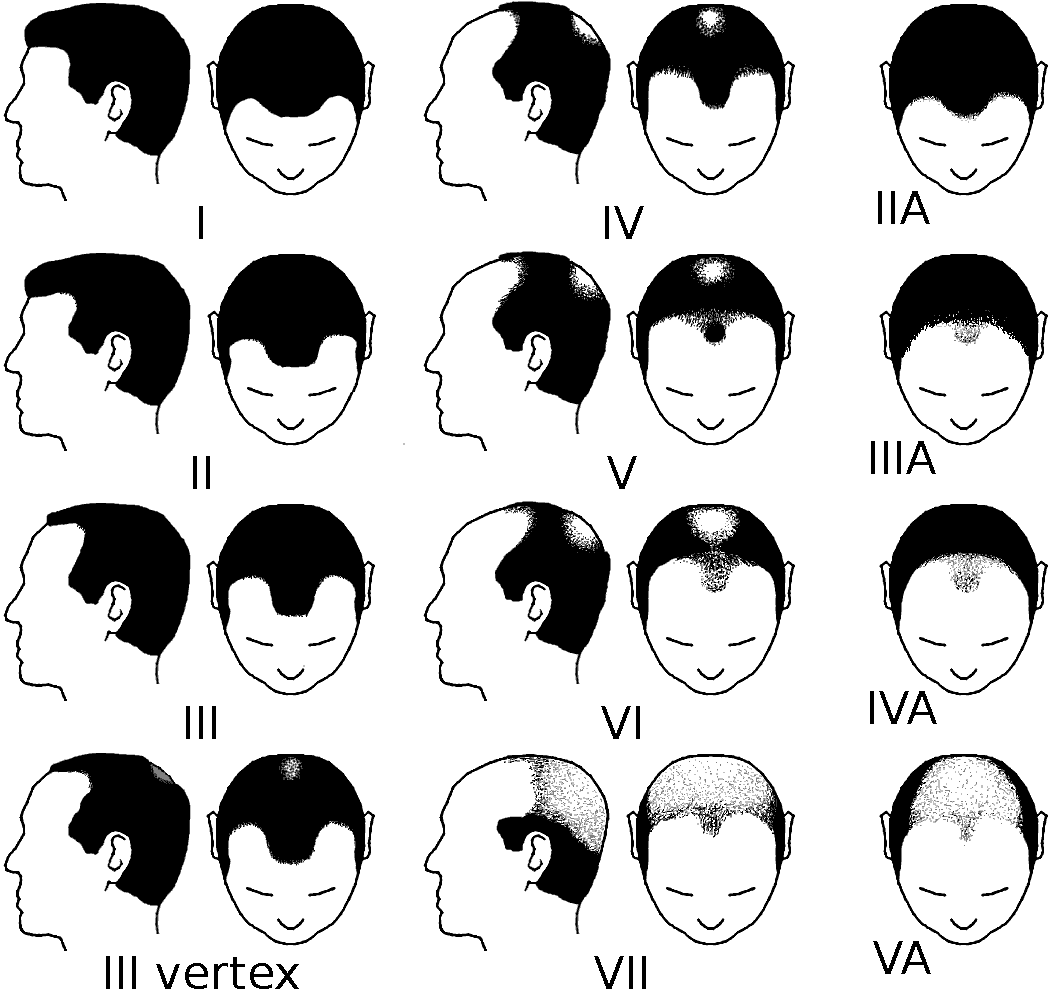
The first thing you might notice about this chart is that it is not a single course that male hair loss follows, but rather many different patterns and shapes.
You also might notice that none of these patterns resembles your unique type of hair loss. That's because the Hamilton-Norwood scale is woefully inadequate to describe male hairloss. It is merely a shorthand for classifying hair loss but it is far from comprehensive.
The reality is that hair loss can manifest in very distinct ways.
Hair loss beginning at the temples, better known as a receding hairline.
Another is hair loss at the crown (or vertex), often known as a bald spot.
The third is a generalized hair thinning on the scalp known as diffuse thinning.
Someone who experiences male pattern hair loss may experience only one, or all of these forms and in varying degrees. A skilled hair doctor can help you identify how you are likely to lose hair, provided the process has already begun.
Equally important to note is that male pattern baldness never occurs outside a delineated area on top of the scalp. That is why even in the most advanced forms of hair loss, there remains a "horseshoe" shape of hair on the back and sides of the head.
Why is it that hair loss (A) occurs only in this limited area and (B) manifests differently from man to man? Why do some guys only ever get a bald spot while other guys have a steady recession of their hair until there is nothing left on top? If you are used to the tired claim that "DHT causes hair loss", the peculiar behavior of hair loss won't make any sense. The fact that hair loss has a shape suggests that the the cause is mechanical. And it is [1].
A primer on hair growth
Before you understand how baldness works, you need to understand how hair works. Hair itself is dead. That's why it does not hurt to have your hair cut, and why cutting your hair doesn't harm its ability to grow. In fact, hair doesn't even grow on its own. Rather, hair is grown by the hair follicle. Whether your hair is thick and full or thin and balding is a function of your hair follicles. Stopping hair loss depends upon your ability to protect and rebuild those follicles.
So what is a hair follicle? It is a complex organ found in the dermis, and made up of 20 different cell types, each with distinct functions. It even has a tiny muscle called the arrector pili, which enables the hair to grow at the proper angle. It is controlled by the interaction of hormones, neuropeptides, and immune cells. Variations in that interaction change the way the follicle grows hair. It can produce fine hairs on your hands, thick, short hairs on your eyebrows, and long hairs on top of your head. Your body has hundreds of thousands of these amazing structures all over it. Yes, even if you are bald.
The actual hair growth occurs due to something called the hair papilla [1]. It is a tiny oval-shaped structure that delivers nutrients and oxygen to the follicle via blood flow. The ability of the follicle to grow hair is highly dependent upon the papilla, and you'll see the role it plays in the hair growth cycle in a moment.
The four stages of hair growth
Every hair goes through a cycle of four stages, and every hair follicle goes through dozens of these cycles in a lifetime.

Anagen phase: This is the phase where hair growth happens. A hair will spend most of its existence in this phase. During anagen, the hair papilla is actively providing energy to the follicle, enabling rapid cell division and generating hair. Hair growth during this phase is around 1 centimeter every 28 days. This phase can last anywhere from 2-7 years, meaning that's how long your hair will grow before it stops growing.
Catagen phase: This is a brief, transitional stage that occurs after the anagen phase. It occurs when the follicle receives a signal (as yet poorly understood) to transition. This phase only lasts around 2-3 weeks. In this phase, the hair papilla disconnects from the hair, cutting it off from its ability to grow.
Telogen phase: In this phase, the hair is not growing. It is sitting in the follicle awaiting the day it is shed. During this time, the hair papilla begins growing a new hair at the base of the follicle. Over time, the new hair will push the old one out of the follicle. This phase lasts around 3 months.
Exogen phase: This is easily the briefest phase of all, as it consists of the moment the hair falls out of the follicle. On any given day a person can expect to lose 50-100 hairs.
Understanding the lifecycle of a hair will help you better understand the mechanics of hair loss, as well as the mechanisms of each of the hair loss treatments on the market.
How scalp tension causes hair loss
Male pattern baldness is an extraordinarily complex phenomenon with a long chain of physiological causes that culminate in the loss of hair. That is why it has taken so long to develop effective cures for the condition. And yet the ultimate cause may actually be quite simple and hiding in plain sight.
The area at the top of your scalp where hair loss occurs is home to the galea aponeurotica. It is a layer of dense, fibrous tissue that is connected to a series of muscles encircling your head, known as scalp perimeter muscles. Those muscles are part of three groups: frontal, temporal, and occipital.
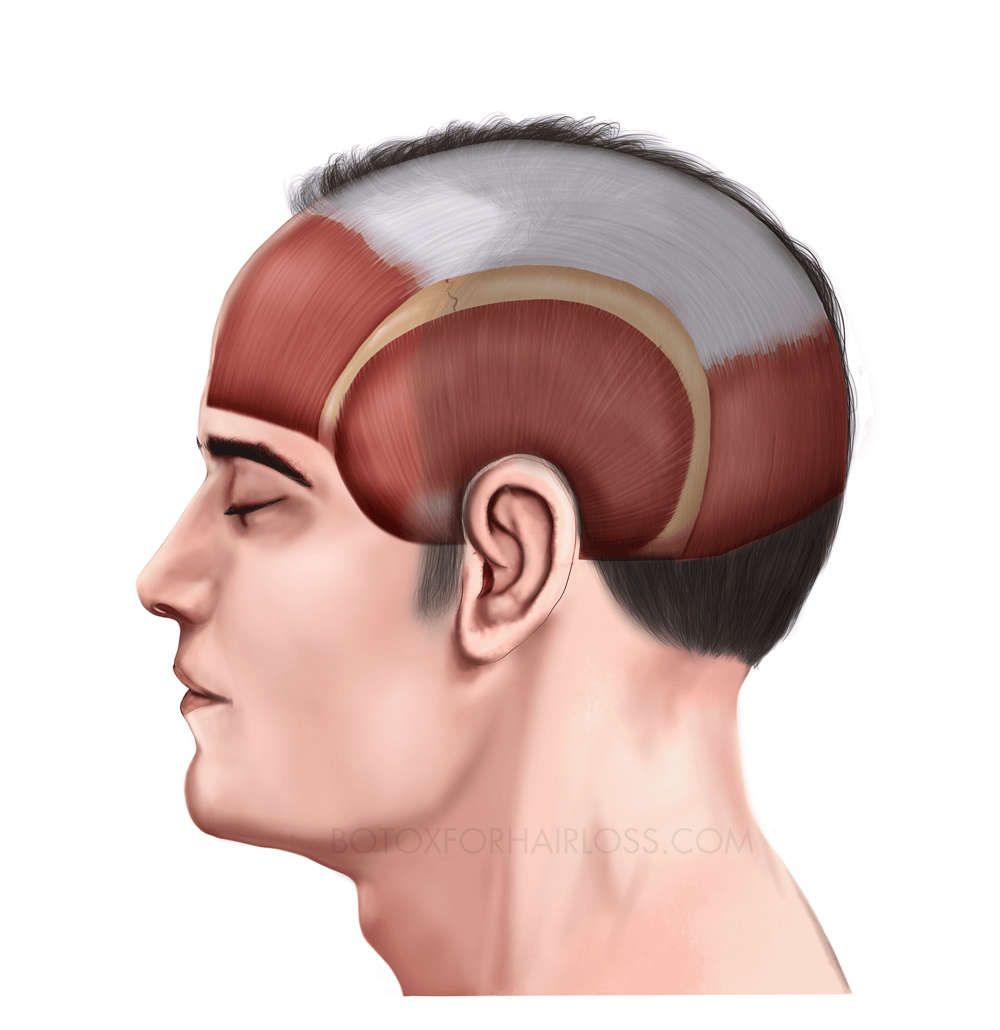
All three of those muscle groups pull on the galea, stretching it out like a drum. Hair loss begins when these muscles begin to pull too hard and stretch the galea too far [36].
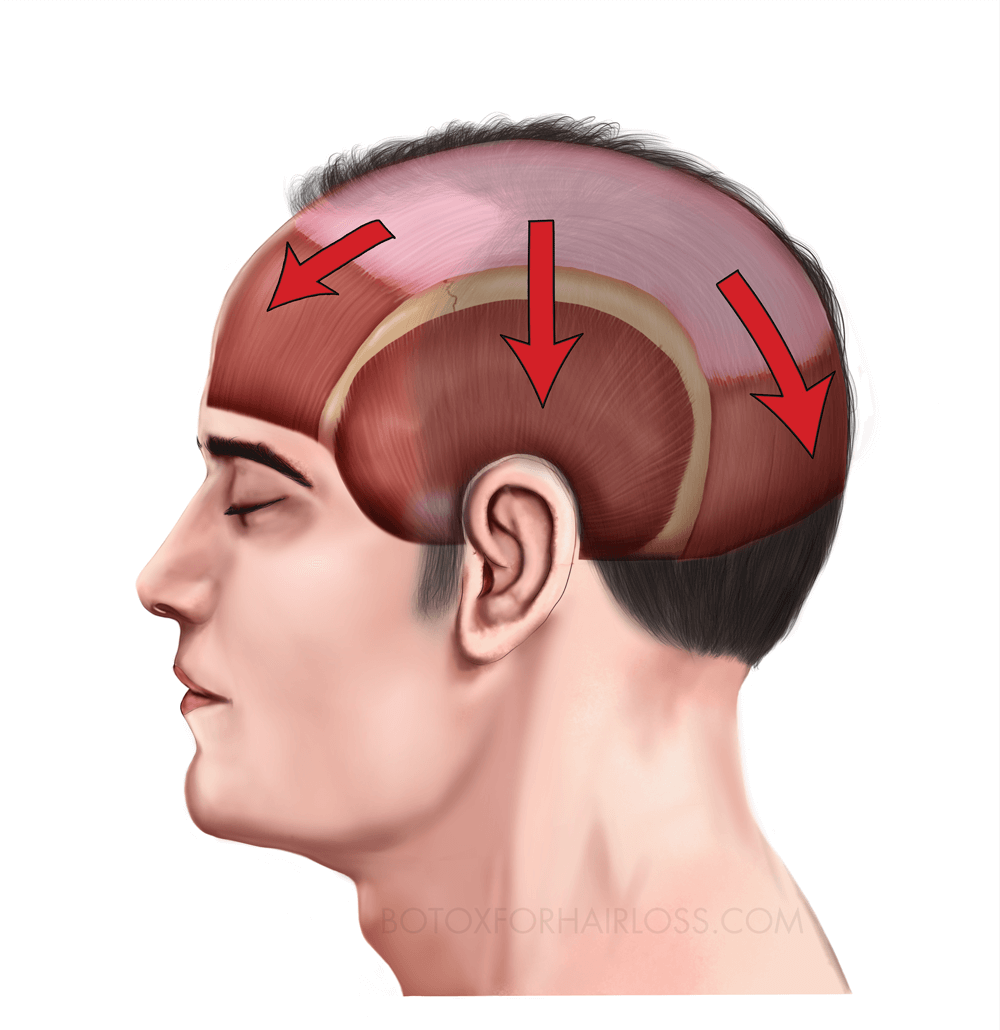
What exactly causes the muscles in the scalp to pull too hard is not well understood, nor is it well understood how much mechanical stress the galea can tolerate. The shape of the skull, the relative strength of the various groups of scalp perimeter muscles, and the distribution of the body's acetylcholine receptors may all play roles. All of these variables may explain why hair loss takes such different shapes.
One way or another, though, If the muscles around your scalp pull too hard, they will begin to cause inflammation to the galea. That is where hair loss begins.
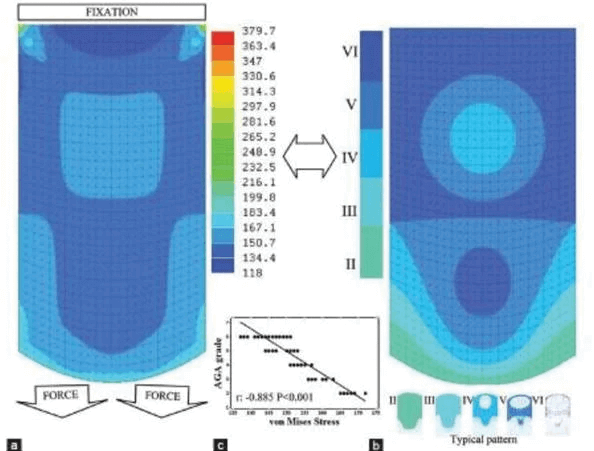
The above diagram illustrates the correlation between stressed areas of the scalp and the areas of the scalp that lose hair by the gradings of the Hamilton-Norwood scale. On the left figure, the dark blue areas represent less stress while the lighter colors represent greater stress. On the right figure, the dark blue areas represent the last areas to go bald. It's a very poorly made graph, but it comes from the primary research. We have reproduced the data in a much more readable form below:
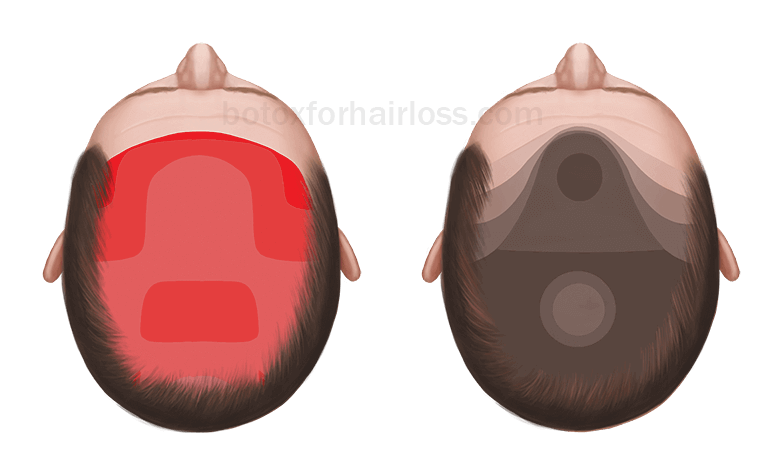
How scalp inflammation causes the release of DHT
Any man with an interest in male pattern baldness knows how "DHT causes hair loss". There is a element of truth to this claim, but it has been grossly overemphasized. The reality is that DHT is one link in a chain that leads from scalp tension to hair loss. DHT does not "attack hair follicles". If that were the case, then DHT-blocking medications such as finasteride would be much more effective against hair loss and, when you discontinue them, the hair loss would pick up where it left off, not skip ahead to where it would have been if you had never taken the drug in the first place.
When the scalp perimeter muscles pull on galea, they stress the tissue to the point where your body actually treats the tension as a form of inflammation. Your body does not like inflammation and has all sorts of defenses against it. DHT, or dihydrotestosterone, is actually used by the body to stop inflammation [2]. DHT is already known to exert anti-inflammatory effects in the prostate [3]. A similar thing occurs in the scalp.
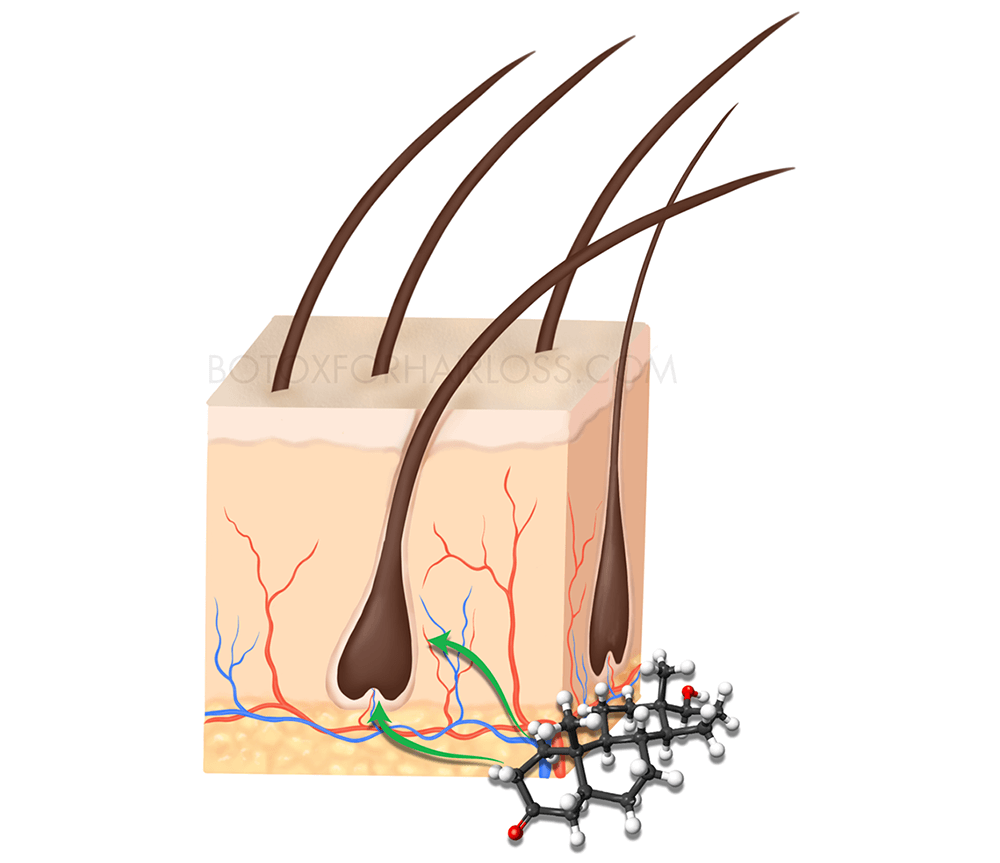
In response to the stress on the galea aponeurotica caused by muscle tension, the body will send DHT to the area. The tissues in the scalp are programmed to respond to DHT by releasing a protein called transforming growth factor β1 (TGF- β1).
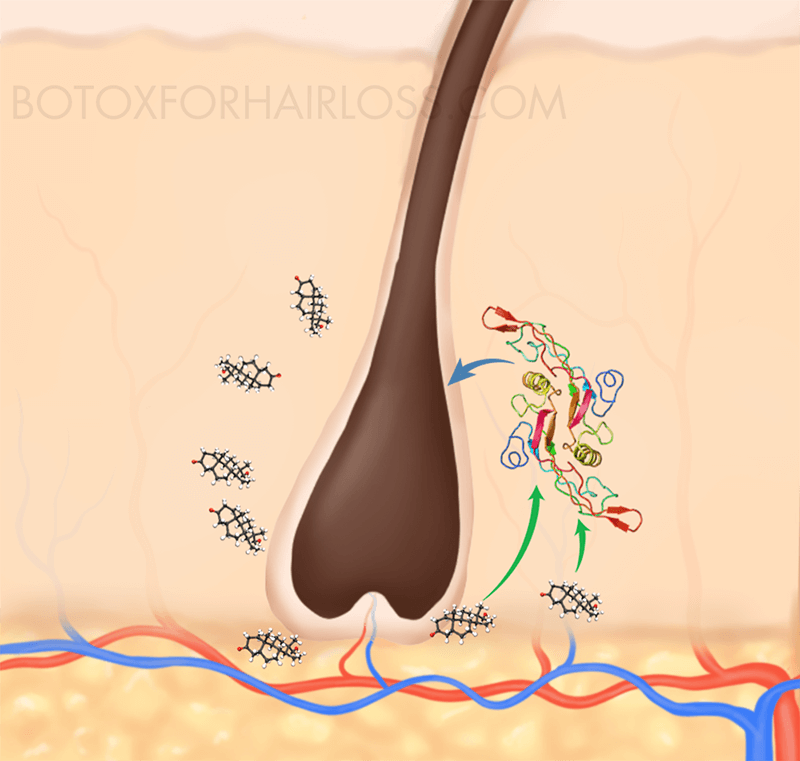
The TGF- β1 produces changes in the scalp tissue that prevent the galea from being stressed, thus putting a stop to the inflammation. The way in which they do this, however, creates unwanted side effects that lead to hair loss.
How DHT causes follicle miniaturization
Miniaturization means that each hair follicle becomes narrower and shallower and the hair that grows from it becomes thinner and less visible until no hair grows from that follicle at all. That is ultimately what male pattern baldness is. It is not about the hair falling out, but the hair failing to regrow as thick as before. Even fully bald men have all of their hair follicles in place, but they have atrophied to the point where they are useless.
But what is happening? Contrary to popular misconceptions, DHT does not "attack the hair follicle". Instead, DHT is sent to the scalp in response to the stress on the galea [4]. The skin of the scalp is genetically programmed to release TGF- β1 when stimulated by DHT [5]. TGF- β1 is a type of growth factor, a natural substance that causes cells to proliferate. In this case, TGF- β1 causes the production of fibrosis. [6]
Fibrosis is a fancy word for scarring. Scars are made of collagen and are meant to quickly close off wounds. When skin is deeply wounded, the body creates a filler made out of collagen to close the wound. The problem with scars is that they are basically super glue for the body. It's great for patching up small holes, but it cannot replace the original materials. Scars lack the layered structure of skin, meaning they can't do all the things that skin does. They can also impede the function of the surrounding skin.
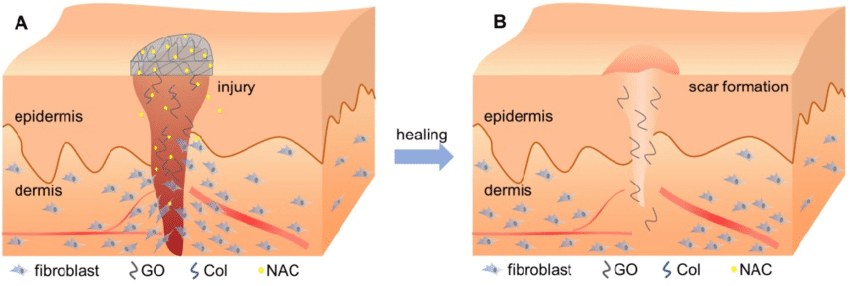
In response to scalp tension, and driven by DHT, TGF- β1 creates scar tissue in and around hair follicles. This is unnecessary since there is no wound to heal. It is a vital bodily function that has gone awry. From the body's perspective, the tough scar tissue it has produced is immune to the stress from muscle tension so it seems like a good solution. But this "solution" produces an undesirable side effect: the fibrosis starts to crowd out hair follicles and even choke them off from within [7]. The hair follicles have less space inside them to grow hairs and the fibrosis around the follicle blocks off capillaries from delivering blood to the hair. [8] [9]
Additionally, the TGF- β1 causes calcification in the skull on top of the scalp [10]. Calcification means the introduction of excess levels of calcium to tissue, leading to hardness. The skull is actually permeated with lots of tiny holes through which blood vessels run, and those blood vessels also serve the hair follicles. As the skull bone becomes calcified, those holes become blocked, further restricting blood flow to hair follicles.
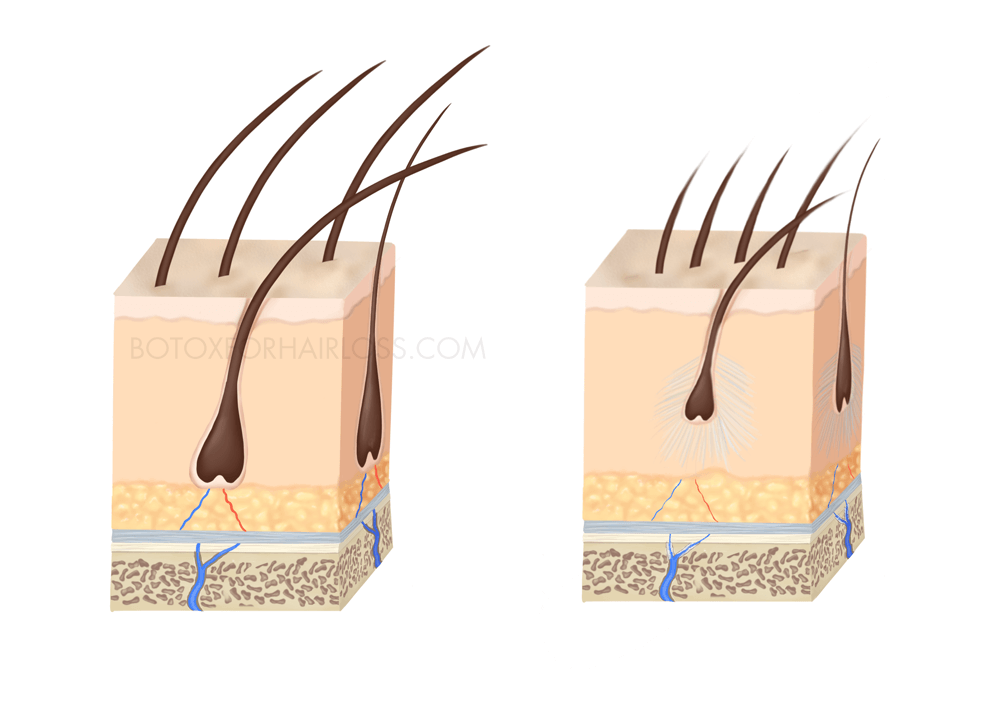
The damaged hair follicle now is able to spend less time in the anagen phase of hair growth because the papilla is unable to deliver as much energy to the follicle. This means each hair fails to grow as long as it previously did before reaching the catagen phase. The telogen phase thus occurs more often, meaning hair is falling out more frequently. The end result is a scalp with increasingly less hair.
Summary
As you now see, male pattern baldness is the product of a long chain of events, but a fairly straightforward process. Mechanical stress on the scalp, caused by a number of factors that are poorly understood, leads to inflammation of the tissue between the skull and the scalp. That inflammation causes the body to send DHT to the scalp where it stimulates the release of TGF- β1. In turn, the TGF- β1 causes fibrosis of the scalp and calcification of the skull, which are evolutionary adaptations to fight inflammation.
Those processes, however, have the unwanted effect of choking off hair follicles, and causing the hair to slowly shrink until it is not even visible, and the hair that remains spends less of its time growing and more time falling out. This explains a why hair loss follows such different patterns from person to person.
To help you visualize this process, here is a flowchart of the causes of hair loss:
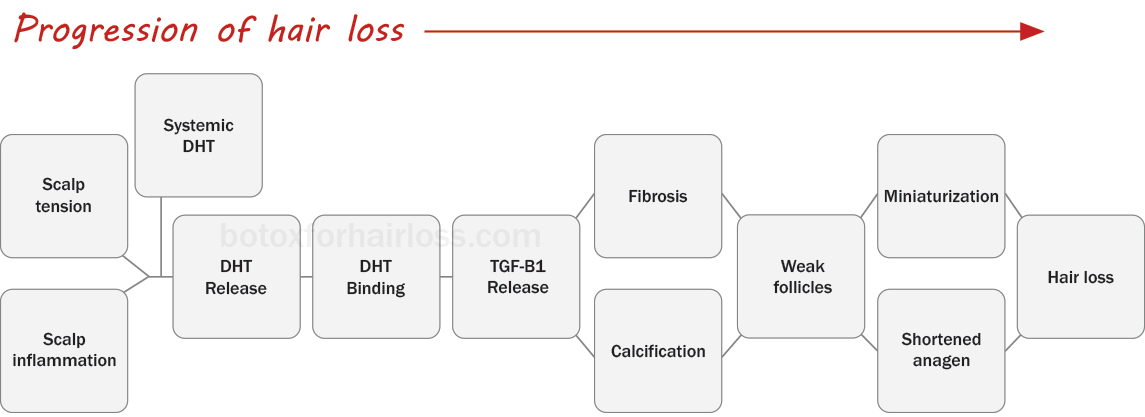
The old theories of hair loss, ranging from the kinda-sorta-true "DHT causes baldness" to the preposterous "your mother's father" myth just cannot hold a candle to this far more scientifically rigorous theory.
In the next section, we will review the various forms of hair loss treatment on the market and explain which part of the hair loss process they target.
Guide to hair loss treatments
If you are experiencing hair loss, or worried about the possibility, you have likely looked online for treatment options and quickly become overwhelmed. What you have found is probably a mix of...
highly disappointing mainstream treatments that are moderately effective at best and come with worrying side effects
expensive surgeries whose results are totally dependent upon whether you can find a good surgeon in a sea of quacks (hint: don't cheap out)
an endless procession of dubious supplements that guarantee only to lighten your wallet
One thing that all of these treatments have in common is that they are marketed by those who do not understand the scalp tension theory of hair loss. Taking a medication prescribed by someone who does not actually understand the mechanisms behind your condition is never a good idea, and this is no exception. We have collected the most well-known remedies for hair loss currently available. We will explain how they work in terms of which part of the hair loss process they target, and rate them for their effectiveness, to the extent that we know.
Mainstream medications
All of the FDA-approved medications for hair loss were originally developed for reasons other than treating hair loss. This means that they are less likely to produce dramatic results for hair loss and more likely to produce unwanted side effects. Nevertheless, these options are out there, they are affordable, and readily available. It is worth at least knowing about them.
Minoxidil (Rogaine)
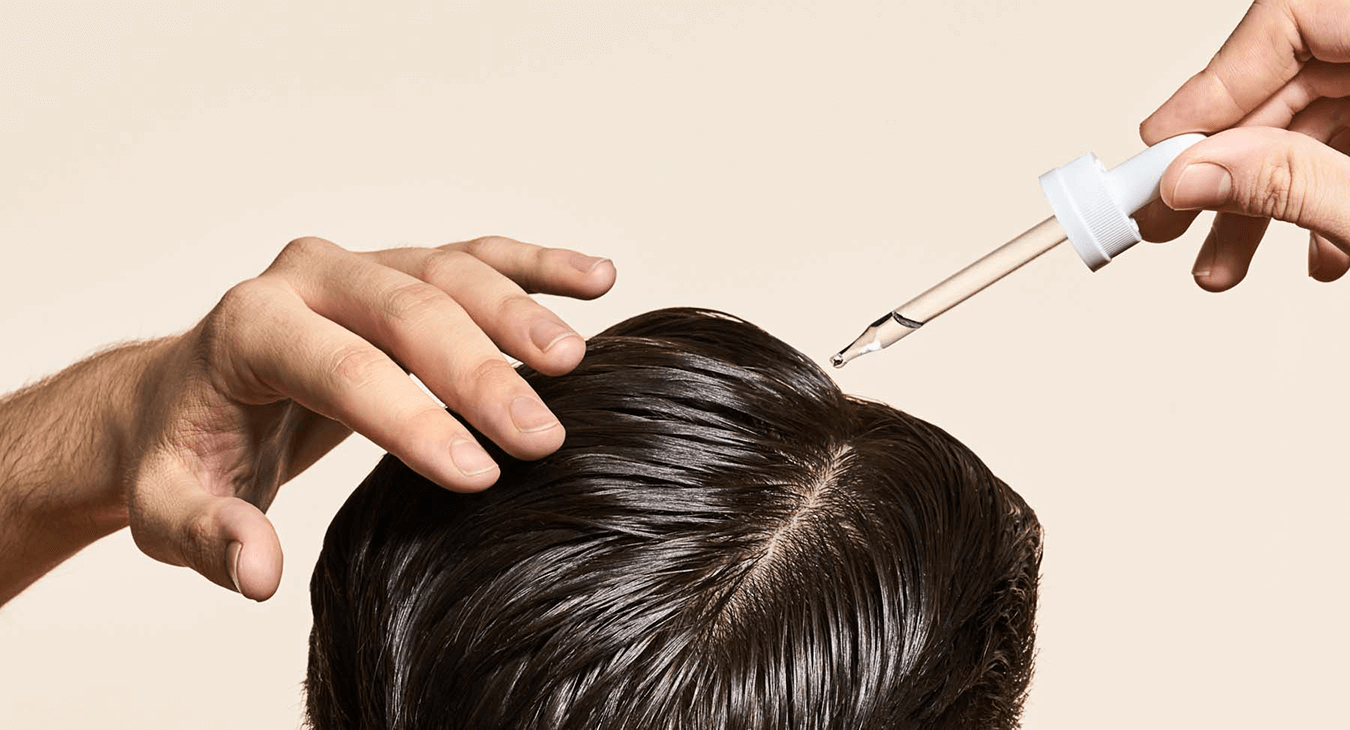
You may know minoxidil as Rogaine. It was originally marketed as an orally administered blood pressure medication in 1979, but one of its observed side effects was increased hair growth. In 1988, Rogaine's parent company, Upjohn, received FDA approval to market it in topical form for hair loss. An interesting fact about Rogaine is that Upjohn originally wanted to call it Regain, but the FDA considered this "misleading", which should tell you to keep your expectations in check.
⚙️ Mechanism
Minoxidil targets near the very end of the hair loss process [11]. As a blood pressure medication, minoxidil works by increasing blood flow (thus lowering blood pressure) and the same mechanism is thought to increase blood flow to hair follicles [12]. While it apparently does cause hair growth when taken orally, for meaningful results, it must be applied topically. It comes in either a liquid or a foam form.

👍Pros
Minoxidil is available over the counter and does not require a prescription in America.
It is also available in generic form, so not only does this keep prices down, but you can choose between various formulations, some of which are gentler on your scalp than Rogaine.
When combined with microneedling, minoxidil becomes extremely effective at regrowing hair.
👎 Cons
Because minoxidil targets the end of the hair loss process, it is not very effective on its own. At best, a modest amount of regrowth may occur. If you are at horseshoe levels of baldness, it won't help you at all.
If you discontinue minoxidil, your hair loss will skip right to where it would have been had you never taken minoxidil. That is, it won't just pick up where it left off months or years earlier, but you will lose all the hair that minoxidil was responsible for keeping.
Minoxidil may simply stop working over time, because the underlying causes will continue to get worse to the point where minoxidil cannot overcome them.
The drug does have some side effects, primarily a rapid heartbeat. Thus, taking it before bed should be avoided by anyone who experiences that effect.
One side effect associated with minoxidil is scalp irritation or itchy rash. This is actually an effect of an additive, propylene glycol. There are formulations available without this chemical.
Minoxidil is highly toxic to cats. There are reports of cats dying shortly after coming in contact with even minimal amounts of minoxidil.
✔️ Verdict
On its own, minoxidil is scarcely worth the trouble it entails. It requires that you apply a topical formula twice a day, it may have side effects, and it doesn't offer any dramatic results. If you plan to combine it with microneedling for a limited duration of time, however, that's another story. In that case, be sure to have Fluffy stay with a friend for the duration of your treatment.
If you do use it, keep in mind that your hair may shed more when you first start out. This is not your hair loss getting worse. It is because new hairs are growing in your follicles and kicking out the old ones.
Finasteride (Propecia)
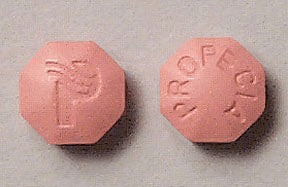
Finasteride is the first of a growing class of DHT-suppressing drugs primarily developed to treat benign prostatic hyperplasia (aka enlarged prostate). It was originally marketed as Proscar for prostate treatment, but when it was discovered that it could stop hair loss, it received FDA approval for this purpose and called Propecia. It is now available in generic form.
While finasteride is typically taken orally, it is now possible to get it in topical form.
⚙️ Mechanism
Finasteride is a 5α-reductase inhibitor [13]. This means it targets an enzyme which converts testosterone into dihydrotestosterone (DHT). By suppressing the production of DHT, it reduces DHT levels in the body by up to 70% [14]. As you can see, this mechanism of action is further up the chain of causation for hair loss, making Finasteride more effective than minoxidil, but potentially at a greater risk.

👍 Pros
As it is typically taken in pill form, finasteride requires much less time commitment and doesn't require you to put goop into your hair and leave it in all day.
It does work well at halting hair loss, and is less likely than minoxidil to stop working over time.
It produces some regrowth of hair, although only recently lost hair.
Finasteride may take up to 2 years to reach peak hair regrowth, if it does regrow any hair.
It works by interfering with your body's hormones. DHT is used for many things that have nothing to do with hair loss, so messing with your chemical balance could lead to unforeseen effects.
There are known side effects to this class of drug, most infamously sexual dysfunction. The degree to which these effects are physical versus psychosomatic is highly debated. Claims of a permanent "post-finasteride syndrome" are almost certainly nonsense, but many people won't want to take that risk.
It requires a prescription from your doctor.
It can work to regrow hair much more quickly than finasteride. It can regrow up to 11% of your hair in 6 months, which is twice as much as finasteride does in the same time.
Despite being more powerful for hair regrowth, it is LESS likely to cause side effects. One possible reason is that it is a larger molecule and has a harder time crossing the blood-brain barrier.
It can also increase the thickness of hairs, and not just their total number.
Reduced side effects is not the same as no side effects. There is still some risk of sexual dysfunction from dutasteride, and some studies have shown equal rather than lesser risk compared to finasteride.
It is not officially approved for hair loss in the United States, and so not every doctor may be willing to prescribe it, although plenty of doctors will prescribe drugs for off-label uses.
The potential for side effects with topical ketoconazole is minimal, generally limited to some redness or an itchy rash.
Some studies show that it is equivalent to minoxidil in effectiveness.
The 1% formulation that is available over the counter is not effective. You need to get the 2% formula by prescription.
Even though it is equivalent to minoxidil in effectiveness, it does not work in the same way and does not have synergistic effects with microneedling.
Caffeine is essentially risk-free. You won't get hurt by trying it out.
It is not very expensive.
Because its primary effect is to energize hair follicles, it will work well in combination with other treatments.
It provides an enjoyable tingling sensation to the scalp upon application.
Most of the research supporting the use of caffeine is associated with the company Alpecin, who markets caffeine products. This doesn't invalidate the research, but it does mean that you should take it with a grain of salt.
Even its proponents admit that caffeine will not stop hair loss entirely, only slow it down.
A drug that inhibits DHT topically is preferable to one that requires internal absorption because it has less chance of interrupting the natural function of DHT elsewhere in the body.
Unlike other topical drugs like minoxidil and caffeine, it works further up the causal chain of hair loss.
It only needs to be applied once per day.
There are still very few studies on its effectiveness, and the results are modest, not stunning.
The lack of research means there is also little data on possible side effects. There are some reports of it causing sexual side effects, which implies the drug can go systemic. Then again, online reports are not the gold standard of evidence, as you are well aware.
It is considerably more expensive than other drugs, mainly because it is so new and has no generic form.
Vitamin A, or tretinoin, is widely available, though it does require a prescription
When used properly, the risk of side effects is very low
It is still not known how effective it is. It is almost certainly useless on its own for hair loss.
According to one study, it performed equivalently to minoxidil in terms of amount of hair regrowth, but it did so faster. [23]
It has no side effects
It does not require a prescription
Research on adenosine is very limited and mainly performed by Shiseido, who sells it
Because it is topical, it should at least theoretically have fewer systemic side effects.
Because it is technically for "research only", you do not need a prescription to buy it.
The internet is full of online accounts claiming to have achieved substantial hair regrowth with no side effects. Take from that what you will.
The fact that the government has not outright banned the sale of this drug means it probably won't kill you. Probably.
It should go without saying that you are taking a big risk any time you consume a chemical marked "for research only".
The fact that the company abandoned the drug despite the huge profit potential means it was either not effective enough, or too dangerous. The latter seems more likely.
By blocking androgen receptors, it may cause them to become hypersensitive meaning that, when the drug is discontinued, you may suffer new or worsened symptoms, such as increased hair loss.
In the event of prostate cancer, it might theoretically render the cancer cells immune to cancer drugs.
There is absolutely nothing in Viviscal that can hurt you. It's about as safe as a product can be and it does not affect your hormones.
Even if it does not help stop hair loss, it may make your existing hairs stronger.
It is very expensive.
Almost all the research for Viviscal is from the manufacturer.
The pills, frankly, stink. Think worse than fish oil pills. On the plus side, they don't seem to produce fishy burps afterward.
Saw palmetto is the best studied of the herbal supplements for hair loss, and it acts on a well-understood part of the hair-loss process.
Although it has a similar mechanism of action to finasteride and dutasteride, side effects appear to be very rare and mild if they occur at all.
Because it interferes with your body's hormones, there is always a risk, however small, of unwanted effects.
Most of the ingredients in Nutrafol are good for you to be taking anyway. Curcumin and ashwagandha in particular are extremely beneficial herbs.
In theory, all of the individual components have a benefit to hair growth.
If you don't want to go to the trouble of assembling all of the individual ingredients together, Nutrafol does it for you.
Their website shows lots of impressive before-and-after shots which include shots of men, where Viviscal only shows women.
They have placebo-controlled clinical studies to validate their product.
You could get all of the ingredients in Nutrafol separately for much cheaper.
It can cost up to $3 a day. Taking it for a year costs as much as a single Botox treatment which would be much more effective for stopping hair loss.
The highest up the causal chain that Nutrafol reaches is DHT reduction from saw palmetto, and it's entirely possible that the saw palmetto is doing most of the work with the other stuff being window dressing.
For those with very advanced or even total male pattern baldness, a hair transplant is the only sure fire way to get a full head of hair. Look at pictures of Elon Musk in the 90s vs. his lush head of hair today to see what it can accomplish.
With a good doctor, success is all but guaranteed. A properly performed hair transplant will cause new, healthy hair to grow in previously bald locations.
This treatment requires by far the least maintenance. In theory, once you have the transplant done, your hair is there for good... or at least for a long time.
Hair transplants are expensive. If you want good results, you will have to pay anywhere from $3,000-$20,000 depending on how far your hair loss has progressed.
Conversely, if you try to save money by hiring a cheap doctor or going to a third-world country with weaker regulations, you could end up with a hideous transplant that does not look natural, or even damaging your scalp to where no hair grows there at all. Horror stories from people who tried to penny pinch on their surgery abound.
There is substantial recovery time after the transplant. With FUT-style transplants, you must take care not to disturb the donor area as a wide swath of skin was removed, and it must be stitched closed.
While the results are pretty fast, your donated hairs will fall out soon after transplantation, and it will take time for the new hair to grow in permanently. You'll need to cut your hair very short for this not to look weird. It may be hard to hide that you had a transplant during this time.
Both styles of transplant, but particularly FUT, leave a visible scar in the back of your head, meaning that you won't be able to wear any hairstyle that leaves that area bare. Should you continue to lose hair and need to shave your head bald, you won't be able to hide that scar.
The notion that hair transplants are permanent is flawed. In fact, with transplanted hair, you are simply resetting the clock on hair loss, and the same conditions that caused your first baldness may ultimately cause a second baldness. You may be buying 10-20 years, but there's no guarantee it's going to remain there forever. If you're getting a transplant because you lost your hair young, you need to take this into account.
The parts of your scalp that did not receive a transplant will still continue losing hair on their natural schedule. This means that, if you get a transplant to fill in a receding hairline, the hair behind the transplant may continue to thin out, leaving you with a weird looking crest of hair in front and a bald strip behind it, like some sort of medieval Irish monk.
For the above reasons, some hair transplant surgeons will only perform the surgery if you agree to take finasteride or dutasteride afterwards.
Microneedling with minoxidil reliably brings incredible results. Up to 90% of people regrow hair, and the regrowth is between 25-40%.
Only hair transplants offer more profound results than microneedling, and at greater risk and cost.
The results can be visible within just a few months.
There are many clinics that perform microneedling, though you may need to confirm with them in advance that they do it on your scalp.
Microneedling doesn't feel pleasant. In order to get results, the needles must be 2 mm long. That sounds small, but when it's turning your scalp into Swiss cheese, you might think otherwise.
You will need to choose between paying a professional almost $200 per session to administer the microneedling or doing it yourself which is difficult and not fun.
Minoxidil has a small chance of producing unwanted side effects such as rapid heartbeat.
Microneedling does not address the root causes of hair loss, and so, unless you include another treatment modality aimed at stopping scalp tension, such as Botox, any gains in hair will again be lost.
Avoiding minoxidil will avoid the potential side effects of the drug
Up to 80% of people will see regrowth, and the regrowth rate is 10-15%
There is less research on microneedling without minoxidil so you won't have as good an idea of what to expect, or how long it will take.
It may take longer to see that regrowth.
PRP is very safe. It does not involve any drugs because the active ingredient is your own blood. It never uses anyone else's blood.
There are a lot of places that perform this surgery so you can always ask to see their before/after photos.
The science behind PRP is quite solid and ever growing.
The procedure is expensive, although the competition between clinics keeps it under control.
Results definitely vary from patient to patient.
It is possible that success of PRP is highly dependent upon how the procedure is performed meaning some surgeons get better results while others will take your money and do nothing.
The company has released a number of before-and-after photos which show impressive results, with the proviso that all of the recipients had early stage hair loss.
It's a good excuse to visit Switzerland or Japan.
The treatment is only offered in two countries, and if you live far away, the cost and logistics of getting this treatment may be prohibitive.
The procedure itself is quite expensive.
It has only been shown to work for those with early-stage hair loss.
Because it is still experimental, the long-term outlook is unknown, including the potential for side effects. Stem cell therapies carry theoretical risks of cancer or other unwanted growths because a stem cell is specifically designed to become pretty much anything.
The frequencies used by LLLT hair devices are at very least harmless and potentially beneficial to your skin, so you may see rejuvenation of your scalp skin, regardless of how much hair growth you experience.
There are no chemicals or invasive procedures involved.
There are some studies that show amazing results: response rates of 70%, hair increase of 93%, and more.
The aforementioned studies have flawed methodology that is biased toward the manufacturers and may not reflect real-world results.
Laser devices range from a few hundred dollars to several thousand, and if you're hoping for any results, you'll need to spend on the higher end.
It strikes at the root cause of hair loss.
It has clinical research to back it [37] and even a patent [38]
It requires no effort on your part, other than going to the clinic.
It becomes less and less necessary over time.
It is very expensive. A single treatment can cost over $1000, and you may need up to 4 treatments per year in the first two years.
Insurance will not cover this treatment, as it does not cover any cosmetic treatment (except perhaps reconstructive procedures following a maiming accident or illness).
Like scalp massage or any other tension-based treatment, it will not regrow any significant amount of hair. It requires an accompanying regrowth treatment.
It does not cost anything, other than to pay for the course online.
It strikes at the root cause of hair loss
According to Rob English, the technique is cumulative, meaning even inconsistent application of the massage will eventually produce benefits.
The technique must be performed properly and if it is not, then it will not work.
It may take months for the scalp to relax, meaning it will take months to know if you are doing the technique properly.
Scalp tension reduction does not regrow hair except that very recently lost, so if you have lost a significant amount of hair, you will need an accompanying regrowth treatment.
It requires a time commitment and effort. If you don't do the work, you won't get the results.
It is reasonably priced at just a couple hundred dollars for something you can use every day for years.
It is based upon sound science.
It is very easy to use and only requires 10 minutes per day.
The only source of information is the company itself although they are a reputable company.
It may not be as effective as scalp massage at reducing scalp tension, and certainly won't work as fast as Botox.
👎 Cons
✔️ Verdict
Generally speaking, we don't like to advocate for any drug designed specifically to interfere with the body's production of hormones. There is a potential for side effects, and when that side effect includes sexual dysfunction (as in, you won't get aroused, or your equipment simply won't function when desired) any potential is too high. With so many other options out there, including its sister drug, dutasteride, there is no compelling reason to take finasteride.
If you do decide to go ahead with it, consider the topical preparation, but you may need to find a compounding pharmacy to do this. This could reduce side effects, but the drug may still enter your bloodstream.
Dutasteride (Avodart)
Finasteride is no longer the only kid on the DHT-reducing block. There is a newer, more powerful drug called dutasteride, marketed as Avodart. Just as with finasteride, it was developed and originally marketed as a treatment for enlarged prostate, and it is still less well-known as a hair loss treatment. And just as it is possible to get finasteride in topical form now, the same applies to dutasteride.
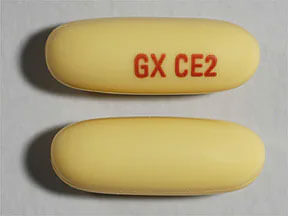
⚙️ Mechanism
Like finasteride, dutasteride is a 5α-reductase inhibitor, but it is even more effective. It reduces systemic DHT levels by up to 96% [15] while finasteride only can achieve 70%. Additionally, it inhibits both types of 5α-reductase - type I and type II - while finasteride only inhibits type I [16].

👍 Pros
👎 Cons
✔️ Verdict
If you really want to play with your hormones, dutasteride is a better bet than finasteride. It produces noticeably better results with seemingly equal or lesser risk of side effects. If you are more apprehensive about cutting-edge treatments such as Botox for hair loss than you are about the side effects of established treatments, then dutasteride is worth considering.
Ketoconazole
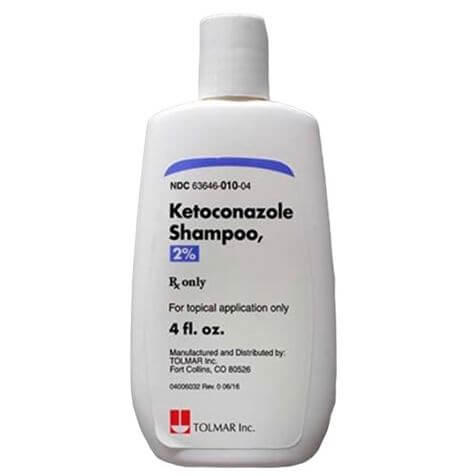
Ketoconazole is a topical antifungal medicine most often prescribed for conditions such as ringworm and jock itch, however it has been shown to have some limited potential to slow down hair loss. You may have seen it at the drugstore in shampoo form called Nizoral.
⚙️ Mechanism
There is some debate as to how ketoconazole works against hair loss. One theory is that it binds with androgen (DHT) receptors in the scalp [17], preventing it from stimulating the release of TGF- β1. Another theory is that, by removing undesirable microflora from the scalp, it decreases inflammation [18], thereby decreasing the body's natural anti-inflammatory responses which involve the use of DHT.

👍 Pros
👎 Cons
✔️ Verdict
Of the four mainstream medications used for hair loss, ketoconazole has the least potential for side effects, so if your hair loss is very early or slow-moving and you don't want to take any risks, this is the way to go. But don't expect any miracles, and if your hair loss has progressed very far, it probably isn't even worth bothering with.
Alternative medications
For many people, the conventional medications on the market, the ones most likely to be known to and prescribed by doctors, don't hold much appeal. Either their benefits aren't substantial enough or the risk of side effects is too high, or a bit of both. As it turns out, there are a number of other medications available. These tend to be a bit more speculative. There is great potential for dramatic results, or at least satisfactory results with little to no side effects. On the other hand, some of these - like RU58841 and Trinov - are newer and there is less data on them, meaning both the risks and the benefits are both less understood.
Expect to see new alternative medications for hair loss appear, as existing drugs are repurposed as hair growth tonics (as happened with the conventional medications) and new research compounds become available on the grey market.
Caffeine
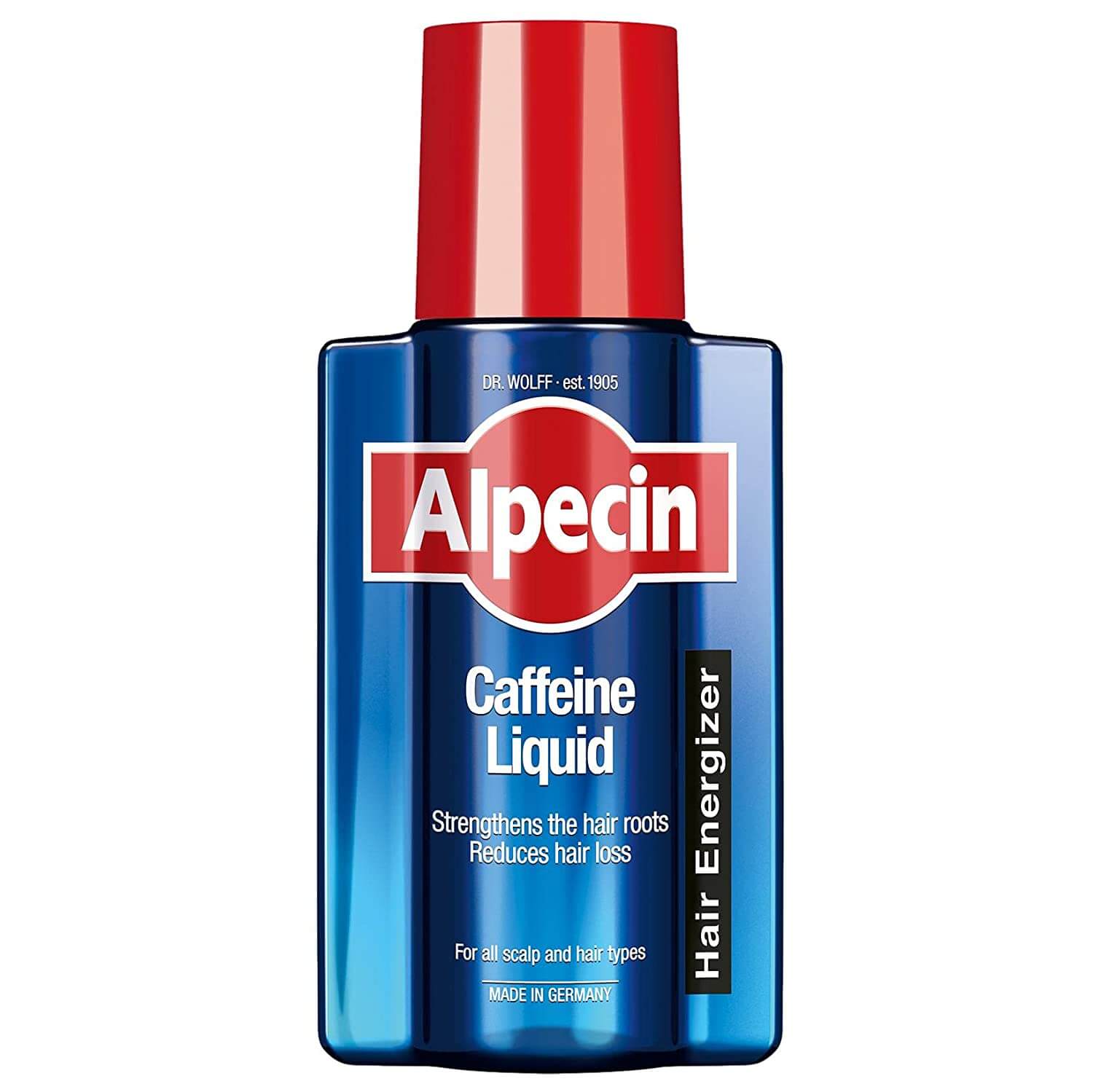
No, drinking coffee won't help you keep your hair. The amount of caffeine you would need to ingest to have a chance of stopping hair loss would kill you. There is some research that suggests that topically applied caffeine can protect hair from baldness to some degree. The main such product on the market is Alpecin, which offers a range of shampoos and topical liquids with high levels of caffeine in them.
⚙️ Mechanism
According to research, caffeine's main effect is that it provides cellular energy to hair follicles. This lengthens the anagen (growth) phase of hair [19], keeping it growing for longer and delaying its telogen phase, where it falls out. This mechanism will not stop the underlying causes of hair loss, though it can slow its progression. Additionally, there are claims that caffeine can block the effects of testosterone on hair follicles without actually suppressing any hormones in the body.
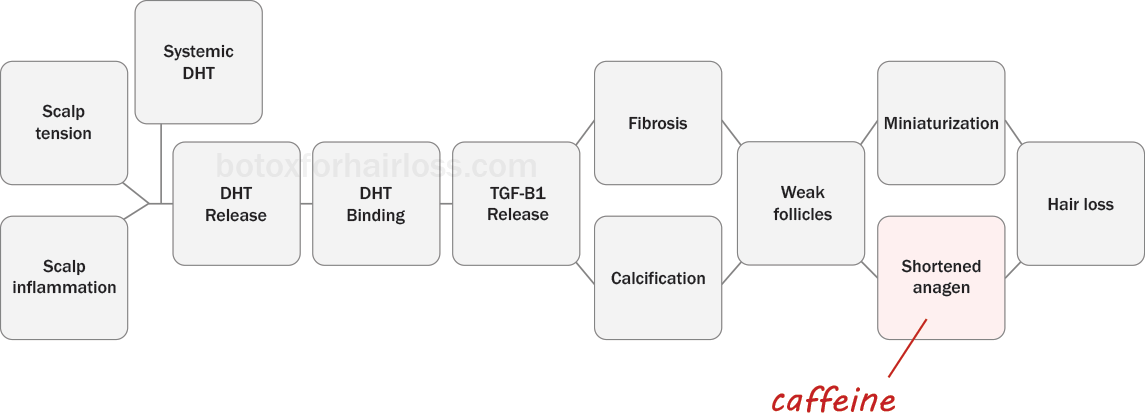
👍 Pros
👎 Cons
✔️ Verdict
If you are not currently losing your hair but are concerned that it may happen, caffeine-based shampoos could be a good way to give yourself peace of mind. As a supplement to microneedling, caffeine could speed up results. If you have recently had a hair transplant, caffeine may accelerate the growth of the new hairs.
If you are hoping that caffeine will single-handedly stop major hair loss, you are going to be disappointed.
Trinov
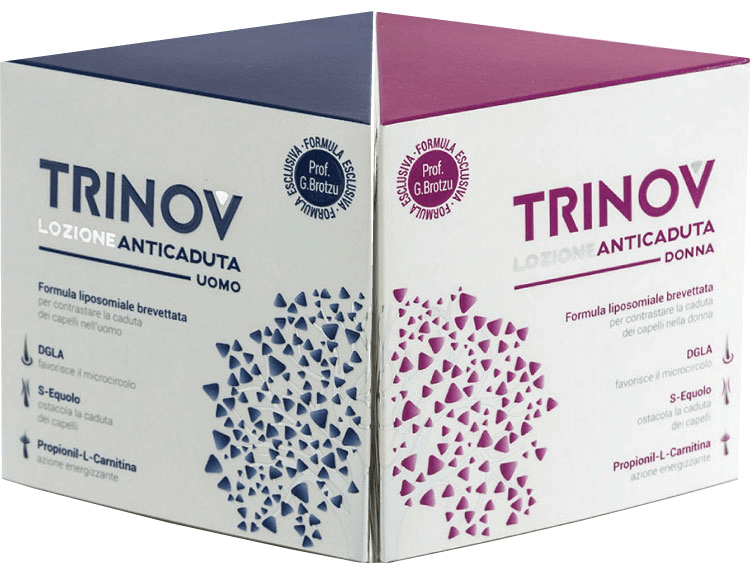
This is one of the newer and more highly anticipated hair products on the market because it has been hyped for so long. Also known as Brotzu Lotion, this topical medication promised big things, but the jury is out on how well it delivers.
⚙️ Mechanism
Trinov has three active ingredients: dihomo-γ-linolenic acid (DGLA), propionyl-l-carnitine (PLC), and S-equol. These ingredients are delivered deep into the skin via liposomes, tiny spherical units made of polyunsaturated fatty acids to which drugs can be bound. Trinov works in multiple ways, including increasing blood circulation in follicles, scavenging free radicals which may damage the follicles, and binding to both DHT and 5α-reductase [20].

👍 Pros
👎 Cons
✔️ Verdict
It is hard to recommend Trinov because it costs so much and the evidence to justify that price just isn't there yet. It contains very biologically active substances which means it is potentially capable of powerful effects, both good and bad. If you are not risk-averse, and you have some disposable income to gamble with, it could be one component of your hair-regrowth plan. Otherwise, seek another option.
Vitamin A / Tretinoin
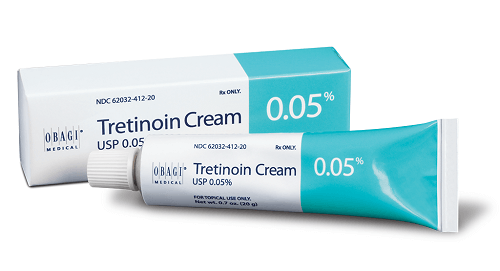
Vitamin A, in the form of tretinoin has been used as an acne treatment since the 1960s and it is effective against a number of cosmetic skin conditions including wrinkles and dark spots. Recently, it has been considered that its dermatological effects might extend to hair loss.
⚙️ Mechanism
On its own, vitamin A does not have any hair-promoting effects, however it appears to enhance the effects of minoxidil by enhancing its absorption [21]
. Studies show that combining minoxidil with vitamin A results in greater hair regrowth.
👍 Pros
👎 Cons
✔️ Verdict
If you are already using minoxidil, it might be worth considering adding tretinoin to your regimen. No studies have been conducted in which minoxidil is combined with microneedling and tretinoin, so if you are considering this triple therapy, you should speak to a dermatologist.
Adenosine
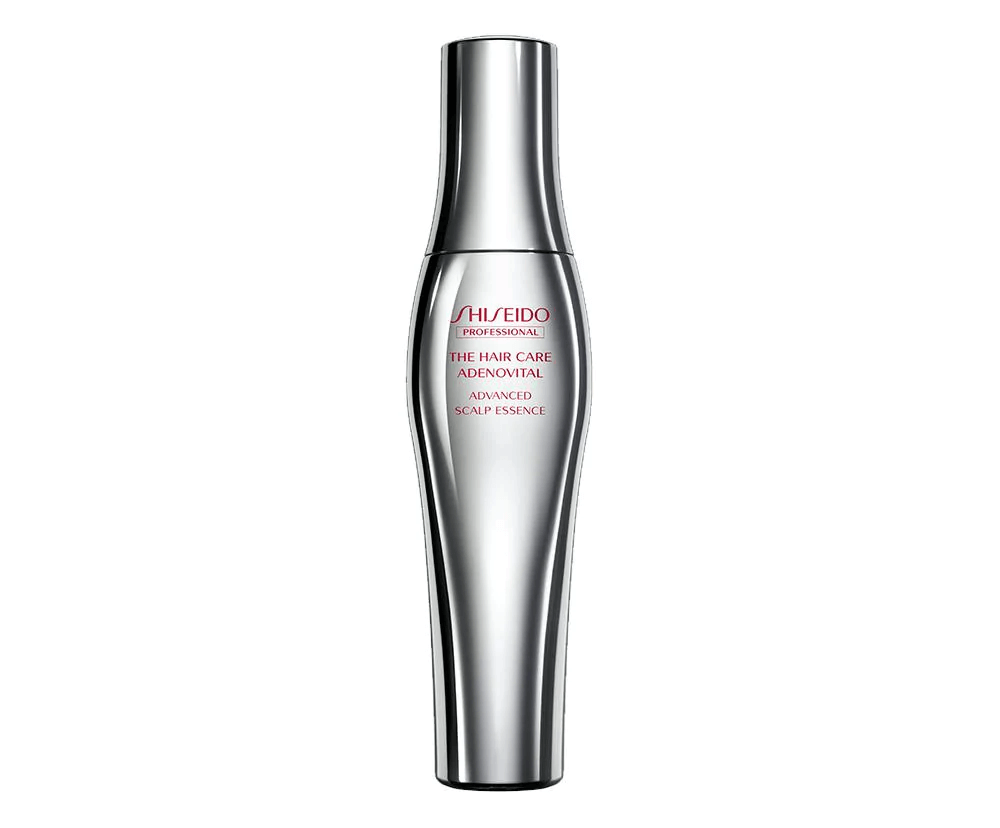
Adenosine is a chemical that naturally occurs in the human body. It is a neurotransmitter in the brain that is associated with relaxation, drowsiness, and sleep. It is a key part of adenosine triphosphate which is used to power muscles. In recent years, it has been studied as a treatment for hair loss and is marketed by Japanese skincare company Shiseido.
⚙️ Mechanism
Adenosine is thought to work by increasing various growth factors in the skin and follicles (obviously not TGF- β1). In studies, it increases the growth rate of hair during the anagen phase [22].
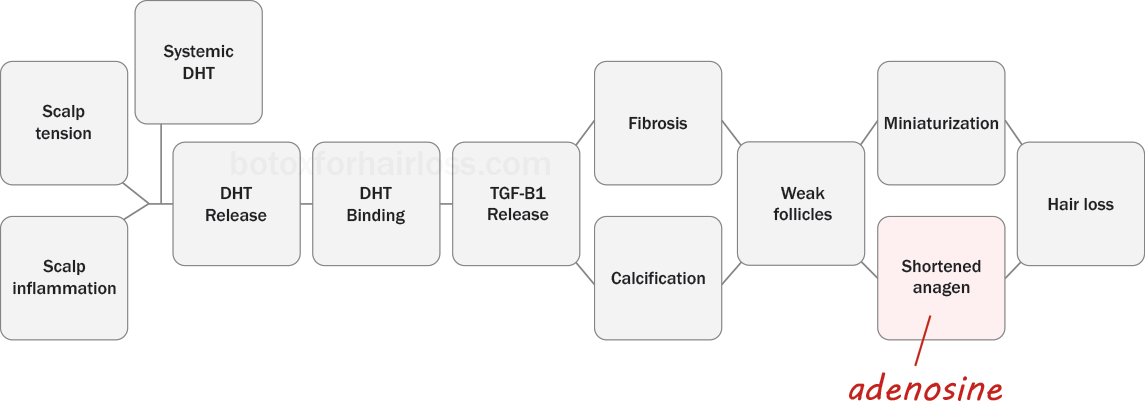
👍 Pros
👎 Cons
✔️ Verdict
The risk here is very low and the potential for benefit is significant. It may even work together with microneedling. Whether it is beneficial to take alongside minoxidil remains to be seen. While it is still a speculative treatment, adenosine is definitely worth a try.
RU58841
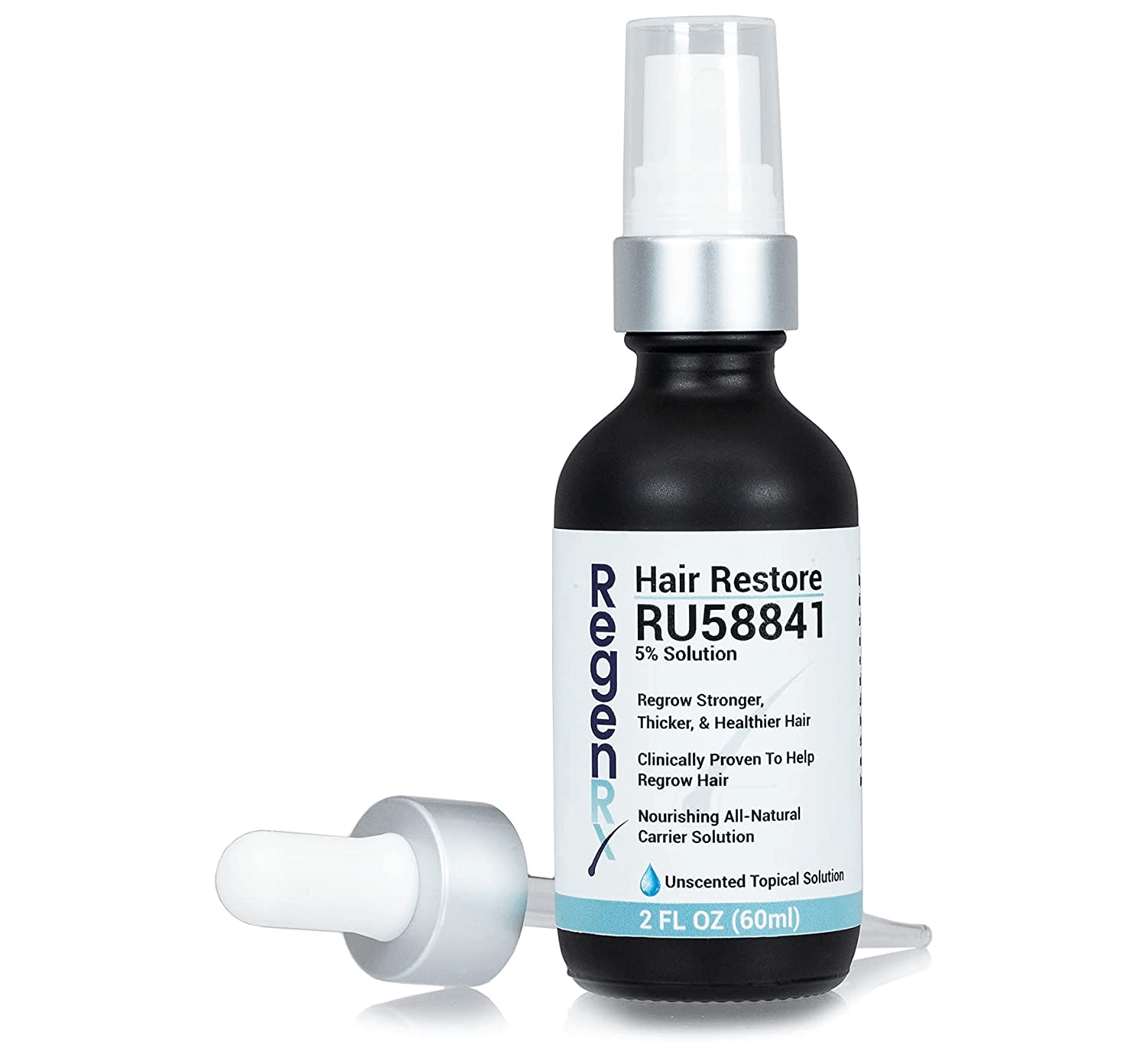
The unfriendly-sounding name should tip you off to the fact that this drug is not officially on the market. It is designated as "research use only" but is nevertheless available for purchase, if you know where to get it. It is a topical preparation. The manufacturer of this substance completed trials on monkeys that showed that it could reverse hair loss. Two human studies were done on RU58841 but the results were never released, and the manufacturer cited financial issues as the reason.
⚙️ Mechanism
RU58841 is a topical androgen receptor blocker. It reduces the ability of DHT to bind to receptors wherever it is applied [24]. This means that, instead of blocking production of DHT, it simply stops the DHT from having an effect where that effect is not desired, i.e. your scalp.

👍 Pros
👎 Cons
✔️ Verdict
There are simply too many other good options to even consider this risky chemical. There are enough people out there claiming amazing results to suggest that the manufacturer discontinued trials because the drug was dangerous. Avoid this one.
Natural supplements
It's a jungle out there. The internet is absolutely overloaded with endless botanical and animal derived products that claim to stop hair loss or regrow hair. The fact of the matter is that most of them are complete crap. You will end up with thin hair and a thinner wallet if you fall that stuff. Therefore, we have only included two natural supplements on here. These two have somewhat more scientific rigor behind them than other supplements meaning they are at least worth considering.
Viviscal
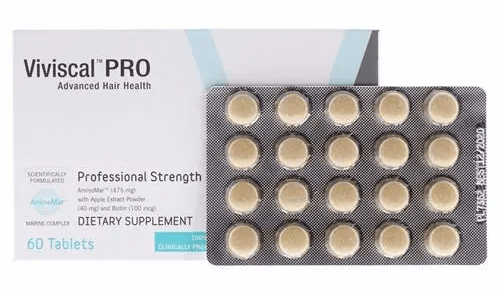
Viviscal is one of the stranger products out there. It is an oral supplement based on AminoMar C, a combination of marine protein, minerals and vitamins. The founder of Viviscal, a Scandinavian professor, claims to have developed AminoMar C by isolating certain proteins in the fish-rich diet of the Inuit who supposedly have extra thick hair and less baldness.
⚙️ Mechanism
Viviscal's AminoMar C is said to supply needed nutrients to hair follicles which should make it more robust against the ravages of fibrosis and calcification.

👍 Pros
👎 Cons
✔️ Verdict
Given how expensive Viviscal is, and its putative mechanism of action which does not target far up in the hair loss process, it is a tough sell. If, however, you are doing microneedling and minoxidil, and you wish to give your hair a nutritional helping hand, it certainly won't hurt... other than your wallet.
Note that the best form of Viviscal is Viviscal Professional. Try to find that online if you can.
Saw palmetto

Saw palmetto is a plant that grows in the American southeast. Its small berries have been traditionally used by the indigenous people of the region. It has been studied for its effect on prostate cancer and benign prostate enlargement as well as potentially for hair loss.
⚙️ Mechanism
As with finasteride and dutasteride, saw palmetto is thought to inhibit 5α-reductase [25], thus preventing the creation of DHT.

👍 Pros
👎 Cons
✔️ Verdict
If you like the idea of targeting the DHT part of the hair loss process, perhaps because you feel it is the best understood part, but you are afraid of pharmaceutical drugs and their potential side effects, saw palmetto is your best option. Nevertheless, speak with a doctor about it. Conventional doctors are unlikely to know about it, so find a higher end doctor or an integrative physician.
Nutrafol

Besides Viviscal, the other big name in hair loss concoctions is Nutrafol. Unlike Viviscal, Nutrafol doesn't have a proprietary ingredient with a markety name like "AminoMar", and emphasizes the synergy of its ingredients, all of which are available in individual supplement form.
⚙️ Mechanism
Nutrafol includes saw palmetto to reduce DHT levels, ashwagandha to reduce cortisol, which is a stress hormone, curcumin to reduce inflammation, and an assortment of other things like marine collagen peptides, horsetail, and vitamins for general hair health. [36]

👍 Pros
👎 Cons
✔️ Verdict
Nutrafol is extremely expensive for a supplement. Just like with hair loss drugs, you will need to continue taking it for as long as you want to keep having hair. The only single ingredient in the mix with solid scientific basis to stop hair loss is saw palmetto, which you can easily obtain on its own for a lot cheaper. That said, it won't hurt you. So if you are looking for that cherry on top of your hair growth regimen, and you have cash burning a hole in your wallet, Nutrafol is there for you.
Physical treatments
Chemical-based hair loss treatments have limitations. In most cases, there is the potential for delayed results with no guarantee, dimishing effectiveness over time, and unwanted side effects. If you want faster results, and a more direct, targeted action on hair loss, then you may want to look into physical treatments. These range from minor, minimally-invasive procedures to outpatient surgery. Needless to say, the cost of these procedures is higher than medications or supplements, and is rarely ever covered by insurance.
Hair transplants
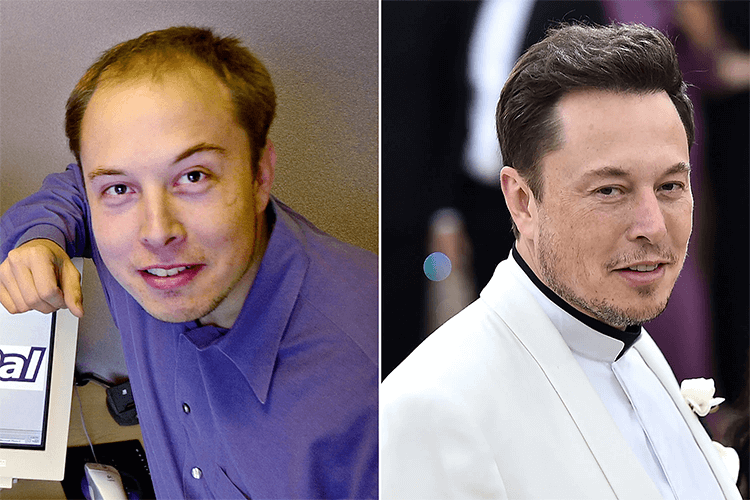
The closest thing you can get to instant gratification as a fix for hair loss (other than a wig) is a hair transplant. Quite simply, hair is taken from the back of your head where hair loss generally does not occur and implanted on the balding regions of your scalp where it begins to grow as though it were always there. The donor hair may be removed in a series of tiny punches in a procedure called follicular unit extraction (FUE) or a single strip of skin, which is called follicular unit transplantation (FUT)
⚙️ Mechanism
Contrary to popular belief, hair transplants do not "stop hair loss". They remove healthy hair follicles from a part of the scalp that does not experience tension (and thus hair miniaturization) and place them into a new location. Just as the process of hair miniaturization took years or decades to produce baldness, it will take as long for your transplanted follicles to be similarly miniaturized [26]. Additionally, the surgical grafting of hairs into the recipient area is a form of micro-wounding that causes inflammation and stimulates growth factors that reduce the scarring that caused the hair loss in the first place (more on that in a bit).

👍 Pros
👎 Cons
✔️ Verdict
Hair transplants are a potent weapon against hair loss. They provide very fast, all-but-guaranteed results, and a total recovery of bald regions. The results can last a very, very long time with no maintenance required. That is enough to justify the high cost, if you can afford it. But be warned: it simply is not true that they "last forever" and if they start to fall out, then you will look worse than if you had simply gone bald. Hair transplants are something of a Faustian bargain. You may decide that they are worth it after all, but don't go into it without thinking it through very thoroughly.
Microneedling with minoxidil
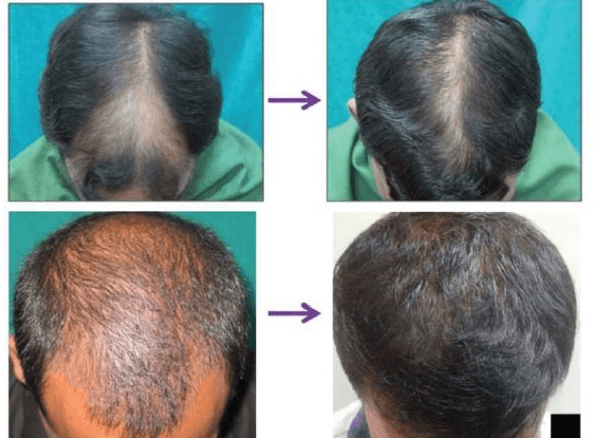
The concept that you can heal your body by damaging it is counterintuitive to anyone not familiar with it. But it is one of the hidden powers of the human body. Microneedling involves the use of tiny needles ranging from 0.5 to 3 millimeters that punch equally tiny holes in the skin. These holes are too small to result in scarring, but big enough to shock the body into producing compounds that regenerate tissue. Microneedling is best known as a remedy for scarring. Acne scars, stretch marks, and other scars can all be faded to nearly invisible with microneedling. More recently, research has been done to explore the use of these same properties to regrow hair.
The accepted regimen to combine microneedling with minoxidil involves twice-daily application of minoxidil for 6 days of the week, and then undergoing microneedling on the 7th day. This repeats weekly for up to 12 weeks.
⚙️ Mechanism
Microneedling elicits a number of growth factors and proteins that are present during the natural growth (anagen) phase of the hair cycle [27]. These growth factors also promote the growth of new blood vessels. Conversely, it down-regulates TGF-β1 and TGF-β2, both of which cause fibrotic scars in hair follicles. This is why microneedling does not cause scarring despite injuring the skin.
Microneedling has a synergistic effect with minoxidil that is so important that employing one treatment without the other seems pointless. Firstly, microneedling increases the activity of sulfotransferase, an enzyme found in your skin. Minoxidil must come into contact with sulfotransferase in order to perform its function, so increasing sulfotransferase will increase the effect of minoxidil [28]. Additionally, the perforations caused by microneedling may increase the depth to which minoxidil can penetrate.

👍 Pros
👎 Cons
✔️ Verdict
The potential of microneedling combined with minoxidil to regrow all or much of your lost hair is reason enough to consider this treatment. The proviso is that, if you're going to expend the time and money to undergo this treatment, you won't want to lose the benefits. If you want to keep the hair you've regrown, you will need a treatment that stops the root causes of hair loss. The best option for that is Botox.
Microneedling without minoxidil
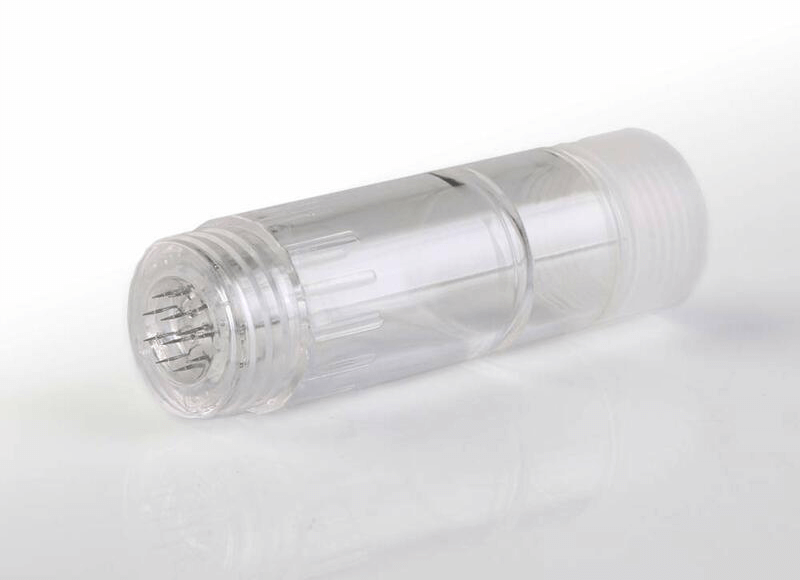
If you are truly reluctant to involve any pharmaceutical drugs in your hair regrowth plan, you may be able to get a benefit from microneedling even without minoxidil [29]. There is less research behind it, but in theory, there is no reason this cannot work.
⚙️ Mechanism
The same mechanisms underpinning any microneedling apply here. The growth factors stimulated by wounding the scalp will reduce the scarring that chokes off hair follicles and also influence the growth of new follicles.

👍 Pros
👎 Cons
✔️ Verdict
The paucity of research on microneedling without minoxidil combined with the high cost of treatment means you're taking a bit of a gamble. You might spend thousands of dollars over a few months, and be disappointed in the results. But, the worst that can happen is nothing. It's up to you.
Platelet-rich plasma (PRP)
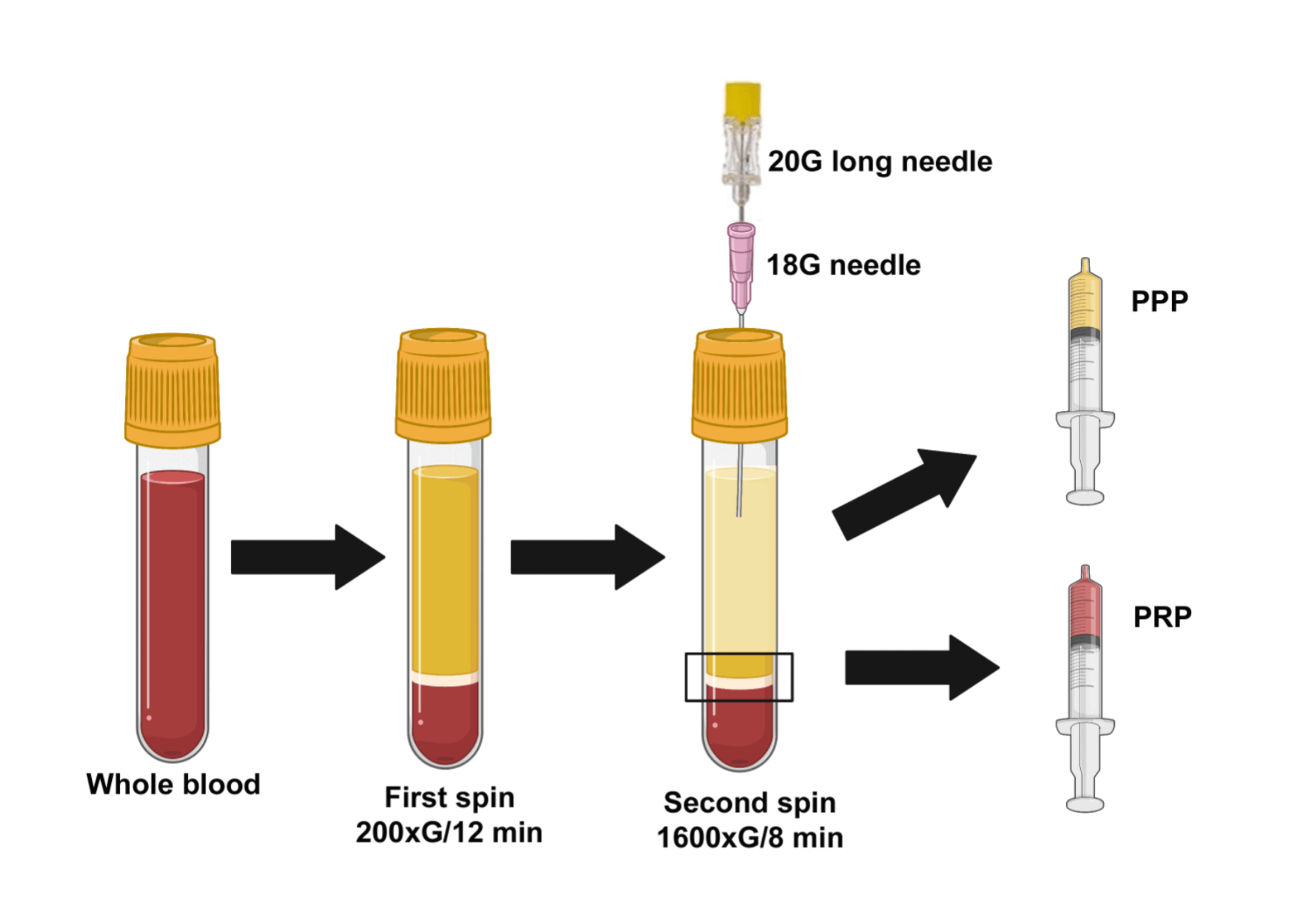
This treatment has become extremely popular at cosmetic clinics in recent years. It has a number of applications including treating sports injuries and osteoarthritis. It is also used for hair loss, both to prevent further loss and to regrow new hair. It is also used to accelerate the regrowth of hair following a transplant.
⚙️ Mechanism
PRP involves taking your blood sample, then purifying it so only the platelets (the cells that help your blood clot and help wounds heal) and the plasma (the liquid part of blood) remain. The result is a liquid that is rich in platelets. Platelets contain many growth factors that can trigger cell reproduction and tissue regeneration. These growth factors will stimulate new hair growth and keep existing hairs from being miniaturized. [30]

👍 Pros
👎 Cons
✔️ Verdict
There is enough evidence to suggest that PRP can work to regrow your hair. Because it does nothing to target the ultimate causes of hair loss, it is not recommend to invest in PRP if you are not also getting a treatment to address those causes. Because there is so much variability in results, insist on getting before/after photos from every doctor you talk to. They should have many success stories. What they won't tell you is their failure rates, so be sure to look at online reviews of the doctor (indeed, look at all the doctors at their clinic). Of course, the caveat always applies about online reviews: angry nutcases abound.
Kerastem
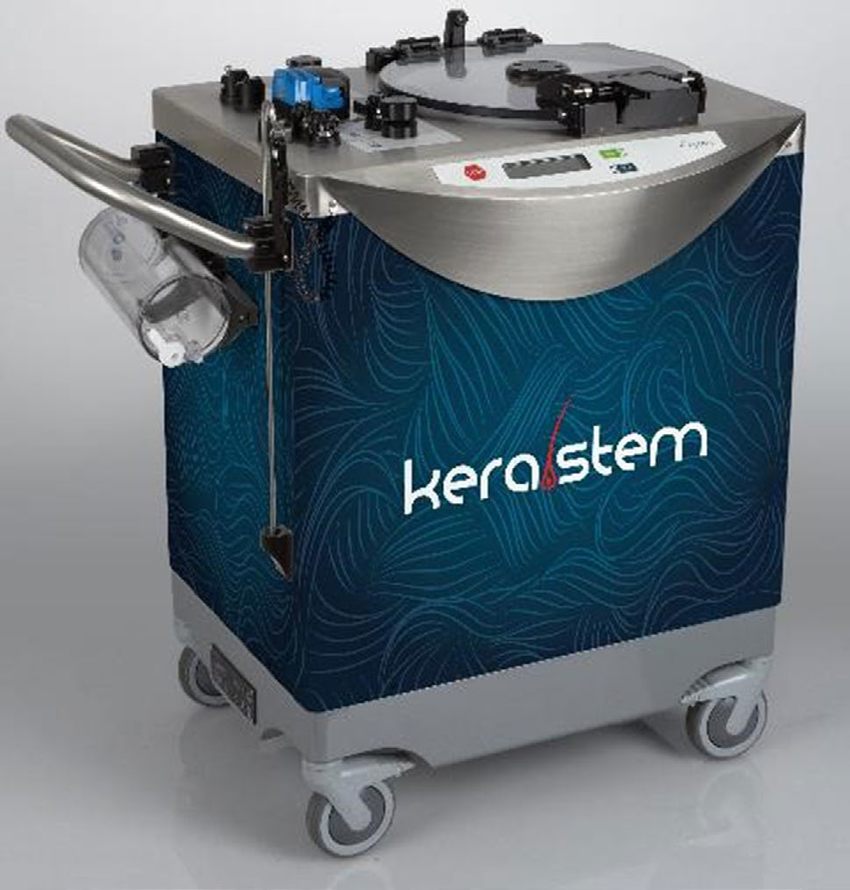
Kerastem is a very new treatment for hair loss from Bimini Technologies, who specialize in fat transfer procedures. By their own words, Kerastem's technology "focuses on the emerging relationship between adipose tissue and hair, highlighting the increasingly important role that adipose plays in driving the hair growth cycle." Because this treatment is so new, it is not yet approved by the FDA, so you will have to go to Switzerland or Japan to get it.
⚙️ Mechanism
The procedure involves having a small amount of fat ("less than a cup", per the company) liposuctioned from your hip or abdominal area. The fat is put into a centrifuge to extract the abundant stem cells contained therein, and then it is mixed with more fat and injected into your scalp where it forms, as the company claims, a fertile environment for hair to grow. [31]

👍 Pros
👎 Cons
✔️ Verdict
This treatment is too new, too expensive, too inaccessible, and too speculative to recommend. You should absolutely keep an eye on it, as they will likely improve the technology for better results. If and when that happens, it will be approved in more countries and the price will go down.
Low-level laser therapy (LLLT)
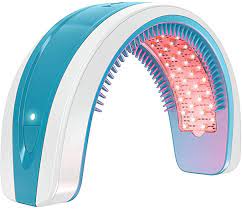
LLLT is easily the most popular of the non-drug hair loss treatments. At its heart, LLLT involves bathing your hair in laser light at very specific wavelengths to stimulate hair growth. It can take the form of combs, hats, helmets, or other devices. It is one of many applications of phototherapy which range from treating depression to fading scars.
⚙️ Mechanism
LLLT can penetrate the outer layer of skin to induce chemical changes in the dermis and hair follicles. There are proteins and growth factors that are activated by laser light in certain wavelengths that increase blood flow, tissue repair, and even the formation of new hair follicles [32]. Another possibility is that LLLT actually induces mild inflammation in the scalp, which elicits a healing response that brings new cell growth.

👍 Pros
👎 Cons
✔️ Verdict
The science of LLLT is very sound, and more and more research is coming out every year. At present, there just isn't enough research on what works best for hair loss. It is almost a certainty that LLLT will improve in its technology and techniques such that it will produce better, more consistent results in the future, but for now the benefits do not justify the cost.
Scalp tension reduction
If you truly want to stop hair loss and clear the path for long-lasting hair regrowth, you will need to hit the root causes. That means stopping muscle tension on the scalp.
Botox
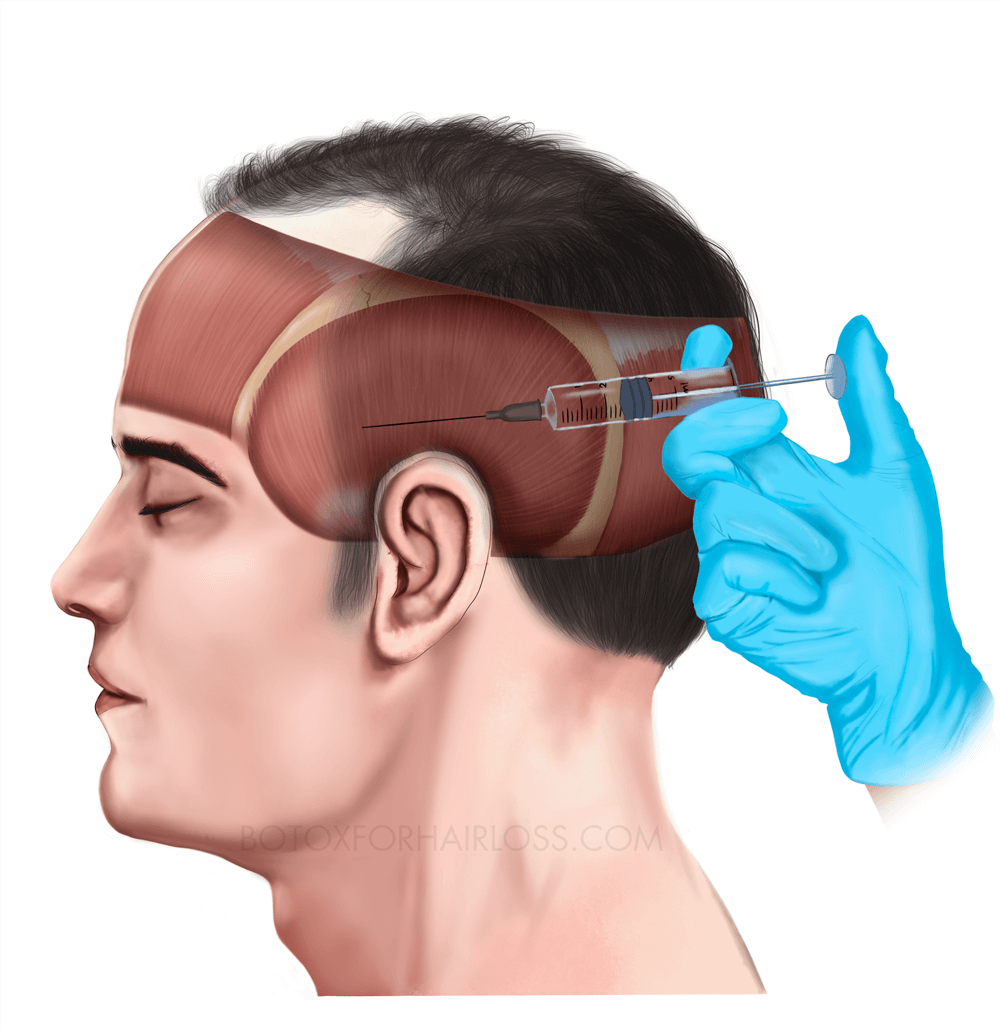
Botox for hair loss is the specialty of this website, and so we know a lot about it. Botox is simply not well-known as a hair loss remedy. This is due in part to the fact that Allergan, who manufactures Botox, has not pursued the expensive process of getting FDA approval to market Botox as a hair loss treatment. The purpose of this website is to raise awareness of this extraordinarily powerful treatment for male pattern baldness.
⚙️ Mechanism
Botox, short for botulism toxin, is a paralytic agent. It performs its therapeutic function by disabling targeted muscle groups. Botox kills acetylcholine receptors, and acetycholine is a chemical that the body uses to contract muscles [33]. Without those receptors, no matter how much acetylcholine bombards your muscle neurons, they will not contract, or contract less, depending upon how much Botox was used. Over time, with enough use of Botox, the muscles will simply atrophy from disuse, as all muscles do. This will make them unable to pull on your scalp muscles in the future. Thus, the more Botox treatments you receive, the less often you will need to get them.

👍 Pros
👎 Cons
✔️ Verdict
We are a little biased, but we believe Botox is by far the best hair loss treatment on the market. If you can make the financial commitment, then you won't regret using Botox. If you have already lost a significant amount of hair and you want to get it back, you will need to include another treatment, or a mix of them. We recommend a combination of Botox plus microneedling and minoxidil.
Scalp massage
If you have the patience and discipline to be consistent, there is a technique for reducing muscle tension in the scalp perimeter muscles. This technique has been developed by Rob English of Perfect Hair Health.
⚙️ Mechanism
Properly applied massage is an established way of relaxing muscles. The scalp perimeter muscles are no exception. Over time, deeply seated tension can be released until the muscles are relaxed enough to stop hair loss. Additionally, one study claims that scalp massage can stimulate dermal papilla cells. [34]

👍 Pros
👎 Cons
✔️ Verdict
This is an excellent option if you are significantly motivated to learn the technique and do the massage. If you are busy, or concerned you won't do the technique right, then you should consider Botox for your hair loss.
Growband
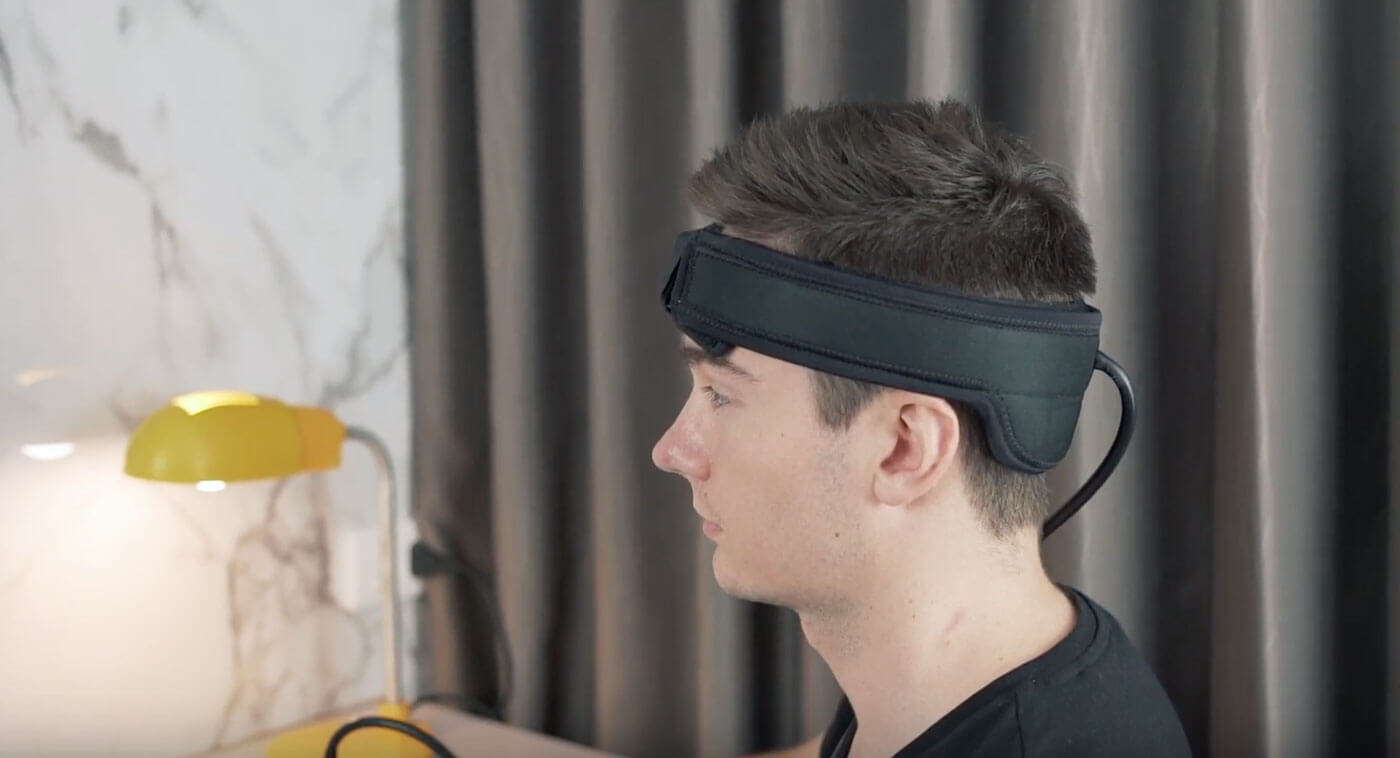
If the cost of Botox is prohibitive and massage entails too much work, Growband from Hairguard offers an interesting alternative. It is a ring that is placed on your head so it wraps around the scalp. You then squeeze a hand pump to inflate the ring which provides a form of scalp massage.
⚙️ Mechanism
Hairguard emphasizes the role of blood flow in the loss or growth of hair [35], and minimizes focus on the processes of fibrosis and calcification. Whether this means that the type of massage provided by growband does not provide the kind of sustained tension reduction that manual scalp massage does is unknown. In general, machines cannot work muscles as well as human hands. The focus of Growband's marketing is on the increase in blood flow, meaning that it may directly stimulate blood flow rather than interrupt the forces which cut the blood flow off in the first place. Most likely, it does both.

👍 Pros
👎 Cons
✔️ Verdict
One way or another, your hair growth regimen needs to include scalp tension reduction. If you are going to learn to do scalp massage, then it doesn't make sense to buy this. If you don't want to learn scalp massage or bother with the effort, this would be a fine alternative. Better still, it can help bridge the gap between Botox appointments. This would be very helpful if you want to space your appointments out to save money.
More to come
The world of hair loss research is growing bigger and faster by the day. There are a lot of experimental treatments in the pipeline, including hair cloning. A true cure for hair loss is getting closer and closer. Until then, we strongly recommend you look into Botox to stop hair loss dead in its tracks.
Next steps
We are building a library of resources on hair loss science, especially that relating to the use of Botox (real Botox!) to stop hair loss. Check in regularly because we are always adding new content.
